
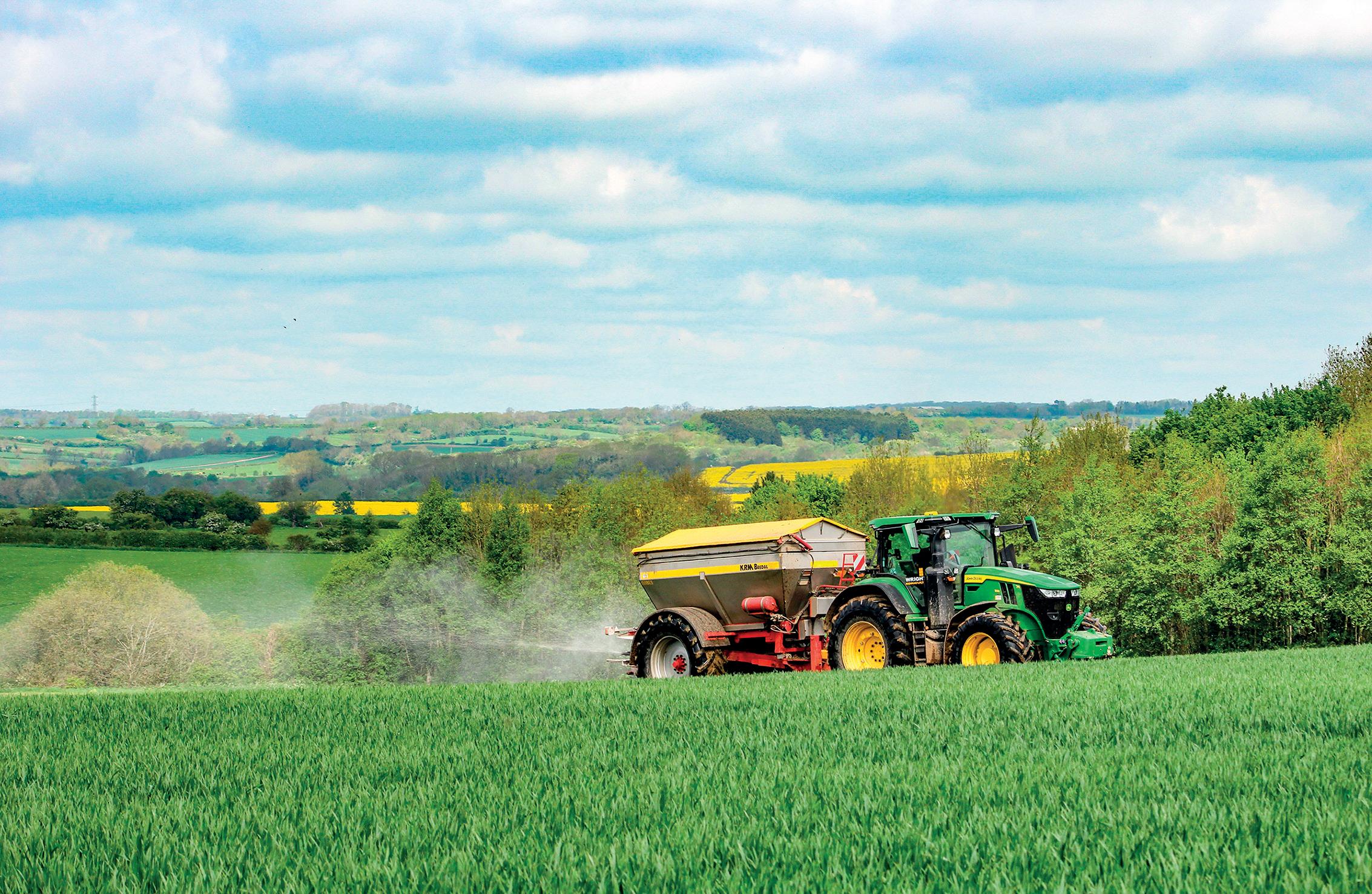



The powerful PTH chopper pump is designed to handle even the toughest applications, perfect for high-pressure slurry spreading and irrigation.










The powerful PTH chopper pump is designed to handle even the toughest applications, perfect for high-pressure slurry spreading and irrigation.





Umbilical spreading is a popular way of applying slurry, but what is the best way to manage pumping? Jane Carley spoke to Storth Machinery.


Umbilical systems are enduringly popular, minimising weight on the land in often wet conditions and cutting downtime from refilling tankers, but they rely on being able to get the slurry from the pit to the applicator efficiently.
Labour shortages and the challenges of controlling slurry pumping equipment present some dilemmas for farmers and contractors.
Neil Robinson, sales manager at Storth Machinery, says: “There are a number of approaches. Some farms will still dedicate an operator at the store to manage a pto-powered pump, but increasingly, that operator is generally also occupied with moving pipes and running the mixer.”
A pressure-based system is the next option, he says.
“We are among a handful of manufacturers offering this type of system, which relies on a dump valve to return the slurry to the


We are among a handful of manufacturers offering this type of system, which relies on a dump valve to return the slurry to the store

store at the end of a run. An operator primes the pump, and the tractor pto is set at 1,000rpm to pump slurry to the dribble bar.
“At the end of the field, the operator on the applicator tractor shuts the gate valve, and the back pressure is picked up by a sensor at the pump, which in turn opens a
hydraulic knife valve to return the flow. Slurry is directed through a small reducer rather than allowing an open return, avoiding damage to the pump,” he says.
However, Mr Robinson adds that when the valve is closed, pressure builds up, which can cause extra stress on the pipes.
He says: “The operator must set the control up correctly in the pump tractor for the right distance, pressure and slurry thickness, thus enabling switchover to take place at the right time.
“The pump tractor runs flat out and as it is remote from the applicator tractor, there is no monitoring of its coolant temperature or oil pressure levels; it is a blind system.”
Being able to control the pump from the applicator tractor is a more sophisticated step.
“Storth’s remote control uses a lever which can be set and adjusted to four positions, controlling the engine revs via the foot throttle position for the tractor pto and a three-way valve in the slurry outlet

pipe, which can direct slurry to the field or back to the lagoon or store,” says Mr Robinson.
Developed using technology from the company’s engine-driven pumps, the remote transmitter can be used to adjust the pump tractor revs (and thus the slurry flow and pressure), activate the diverter valve at the end of the field and put the system back into work by switching to field mode.
This is all achieved from the cab of the application tractor using a watertight handset, which also offers alerts for low pressure and radio signal consistency.
The system has been developed so it is non-tractor-specific and can be used universally when incorporated with Storth’s range of frame-mounted centrifugal chopper pumps. The signal range is 3km, or 7km with aerial connection.
“You still need to prime the pump, start and stop the tractor
There are a number of ways to control a pto-powered slurry pump, depending on the size and complexity of the operation and the available labour.



and control the pto, but it does mean that the operator at the slurry store could go off and do another job. While it remains a two-man operation, there is more flexibility,” says Mr Robinson.
Storth’s engineering and technical manager Ieuan Evans developed the Tractor Remote Control system for pto-driven slurry pumps as part of his masters degree at Harper Adams University.
Mr Evans won the Young Engineer Award at LAMMA 2024 for the project, and it is now in production as the Smart Slurry Pump.
The next development in the Smart Slurry Pump evolution is an IsoBus version, which would offer further control of the tractor, taking care of increasing or decreasing the revs and switching from return to store to field mode. It can also monitor coolant and oil pressure levels.
“In theory, it could engage and disengage the pto as well, although there is a key safety consideration
issue with this as to the security of using ptos without supervision, especially where there are children on the farm,” says Mr Robinson.
This is a project for the future, he adds, as it requires the development of software and considerable investment.
“Another issue is that many slurry pump tractors are simple, high horsepower units which do not have IsoBus,” he says.
Storth also supplies a 175hp engine pump station, which uses a remote control to operate a threeway valve via radio frequency, with a range of up to 5km.
“This controls the engine revs when sending the slurry back to the tank, and has a display showing valve status, revs, coolant temperature, oil pressure and fuel levels,” says Mr Robinson.
“The engine has a slurry pressure sensor and it is also possible to have a slurry pressure valve at the inlet, so that if the supply runs out, you can switch off.”
The remote also starts and stops the pump, although it still needs to
be primed manually if there is no head of slurry.
Mr Robinson says: “An enginedriven pump has an advantage for large or complex systems as you can send the slurry back to the tank when you want to move fields and blow out the pipes with a compressor if required.
“It is then easy to roll up and lay the pipes out to another field before refeeding the lines with slurry.”
While an engine-driven pump comes with a high price tag – about £58,000 – Mr Robinson says that it cuts fuel consumption by up to 30 per cent compared with a tractor pto pump, and also reduces tractor depreciation.
“We are seeing a lot more demand for engine-driven pumps. While in livestock areas contractors still work on hourly rates, there is a move to charging by cu.m for slurry pumped, so minimising downtime becomes more important,” he adds.
Front linkage-mounted holding tanks for slurry on the applicator
tractor are an option for wider dribble booms used on arable crops, but could be prohibitively expensive for smaller systems, says Mr Robinson.
The growth in low-level application is a factor in the increasing interest in more precise control of slurry pumping, he says.
Availability of grant funding has favoured investment in such systems, with splash plates going out of favour.
Mr Robinson adds: “With a splash plate system, you could just about get round a corner without having to stop the flow of slurry, but with wider dribble bars and trailing shoes it is more difficult –there is always the risk of cutting the pipe by running over it with a trailing shoe.”
Developments in application systems which use pressure sensors and flow meters to work with tractor headland management also mean umbilical application can offer high levels of accuracy, which is required to get the best out of the slurry’s nutrient value, says Mr Robinson.
Umbilical spreading reduces weight on the ground while also cutting downtime from refilling tankers.

Inset (right): The operator has a remote control handset which also offers alerts for low pressure and radio signal consistency.
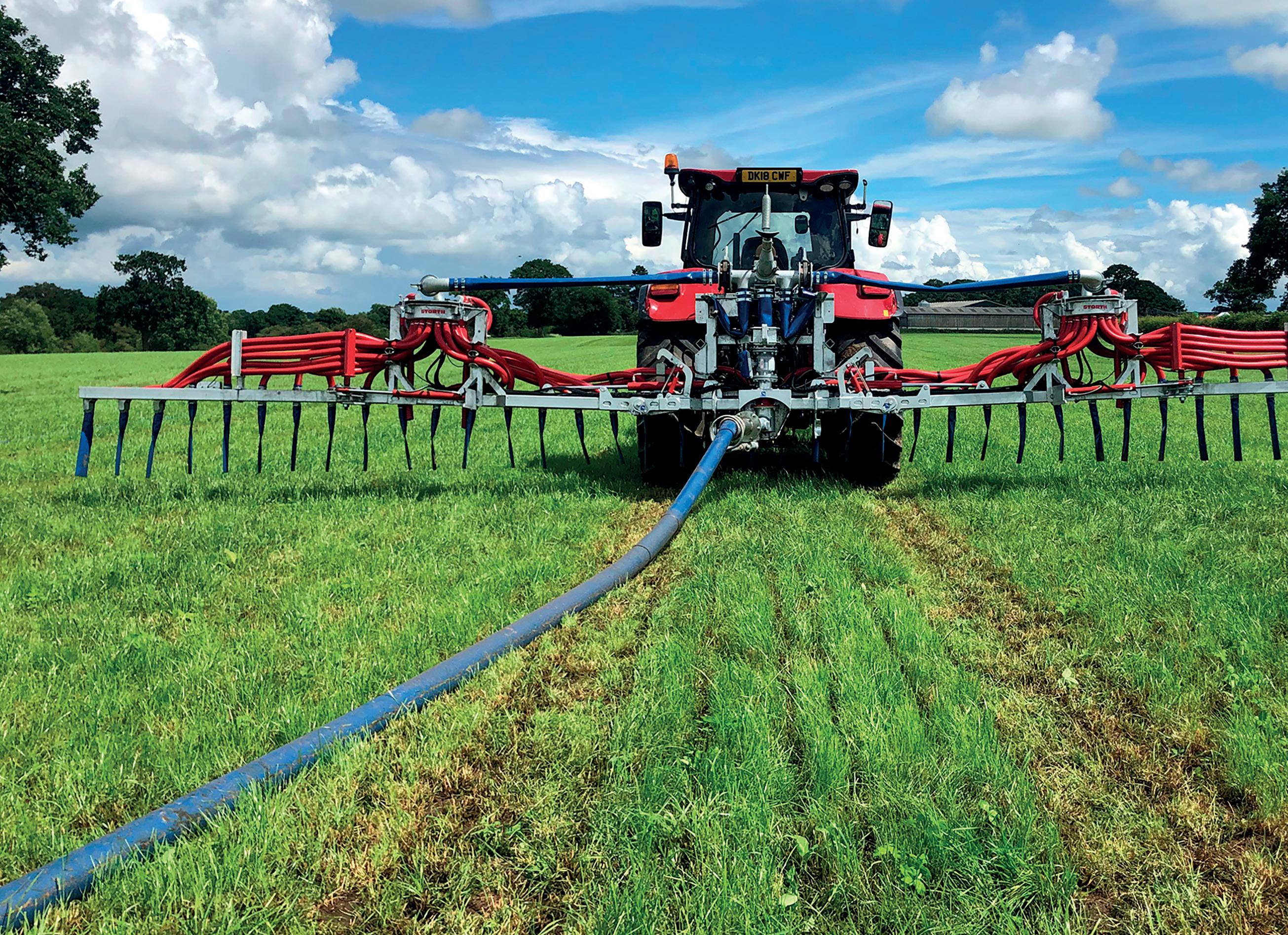













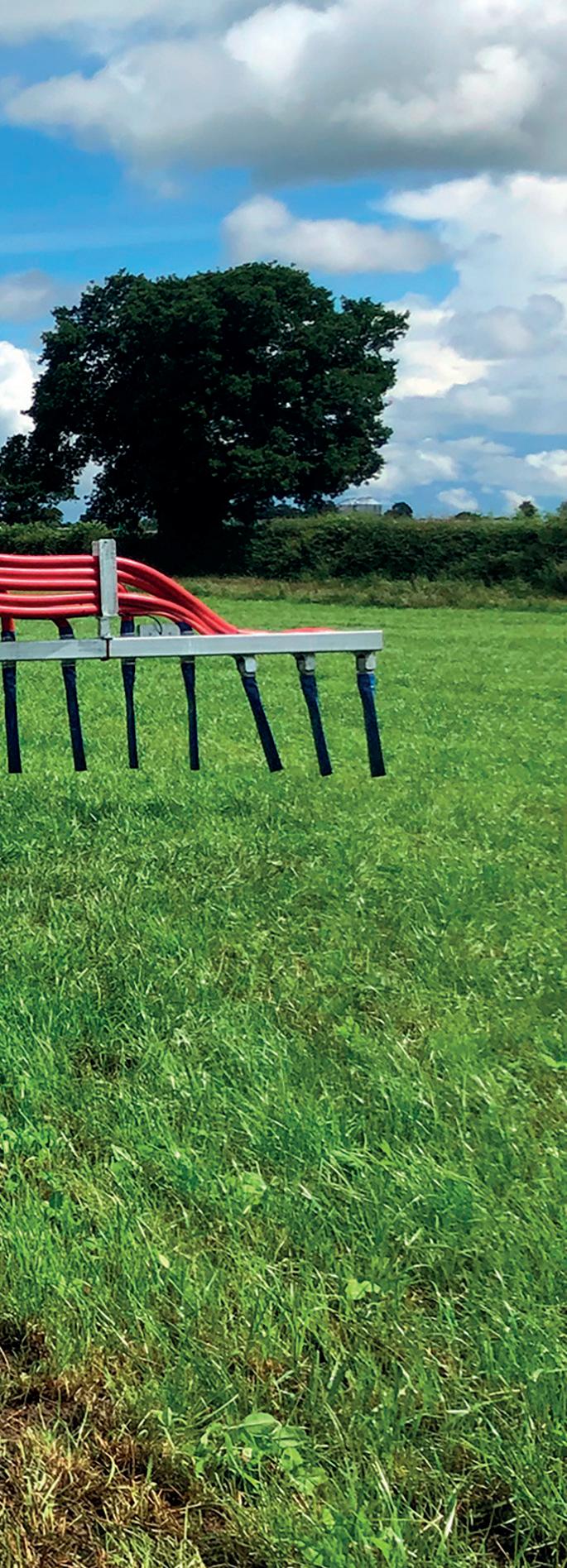












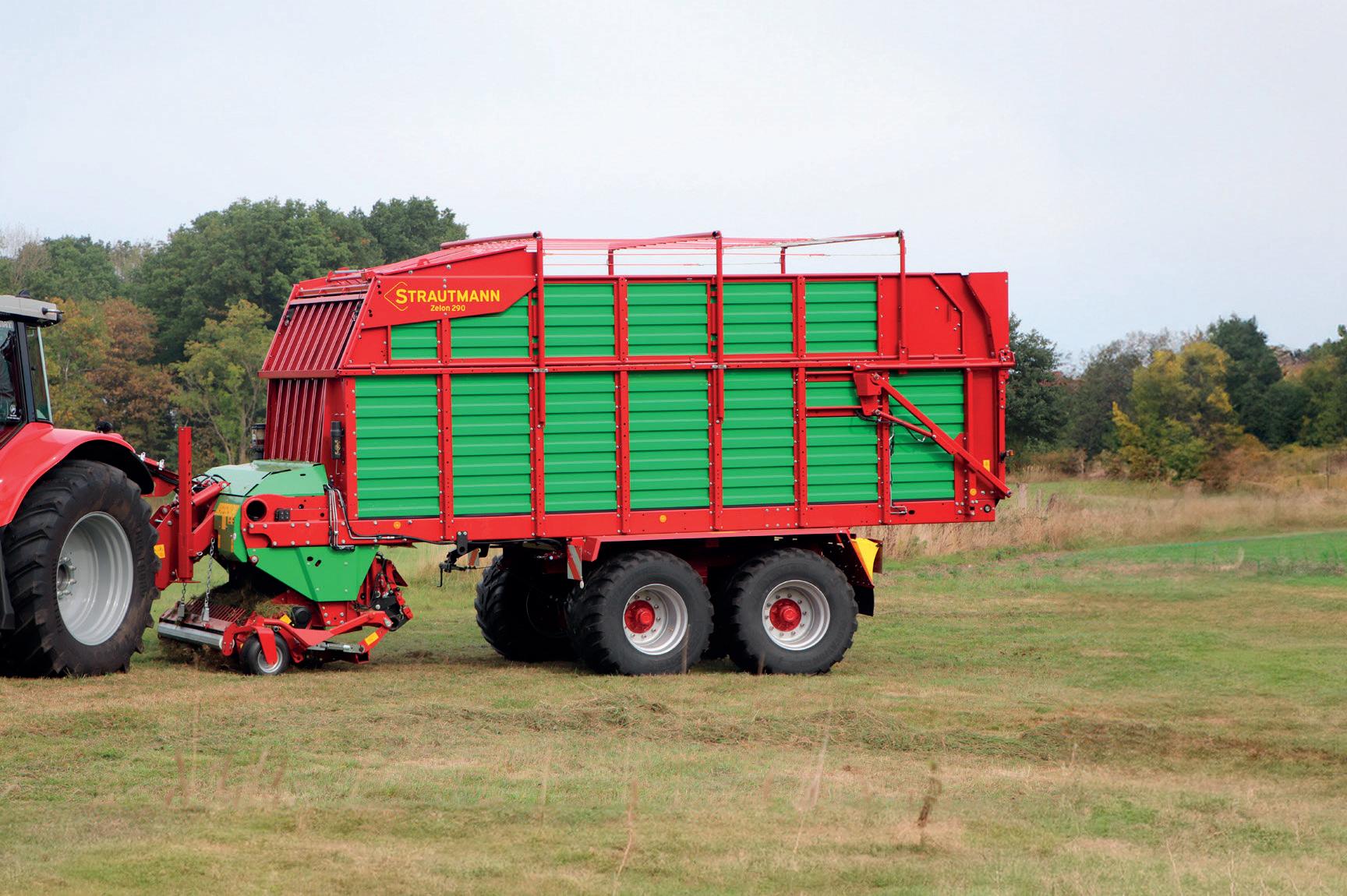









With an operating weight of around 8.5 tonnes, the midi excavator offers great flexibility for farm use. With the right attachments, it could be an invaluable tool for more than just ditch cleaning. Geoff Ashcroft takes a look at JCB’s 86C.
As a machine for farm use, the midi excavator combines a useful mix of physical size with a generous working envelope.
Where the zero-tail swing versions trade reach and dig depth for a shortened rear end suited to working in confined areas, the conventional model will out-dig and out-reach its condensed stablemate, perhaps better suiting farm use.
British maker JCB introduced its 64hp conventional 86C-1 and zerotail swing 85Z-1 models in 2014.
Both tip the scales at around 8.5 tonnes, and offer decent working envelopes that could suit most farms’ needs for reach and dig depth.
A new cab brought 6 per cent more space and 11 per cent better visibility than on previous JCB midi excavators.
These models also gained a H-pattern track frame carrying longer tracks for improved stability and an increase in travel speed from 4.2km/ hour to 5km/hour. Steel body panels
replaced plastic items, while 500hour greasing intervals contributed to claimed lower operating costs.
Later second generation versions arrived in 2019, and while engine power remains unchanged, it meant EU Stage V emissions-compliant engines arrived with an integrated DOC and DPF package.
Dash two models also saw several refinements added, including the arrival of a new 180mm in-cab colour display, a working range indicator, a machine health check screen and eight additional tie-down points to improve security when being moved by low-loader.
Farmers Guardian’s featured machine is a low-hours 86C-2 groundworker available from Stroud-based Jay Bee Plant Sales. This well-lookedafter 2021 example is equipped with a hydraulic quick hitch, three buckets, heated seat and air conditioning, and is priced at £44,997.

The 86C-2 groundworker is equipped with a hydraulic quick hitch, three buckets, heated seat and air conditioning.

INSIDE the rear counterweight is a Kohler diesel engine. This four-pot turbo diesel pushes out 64hp for the 86C. The later dash two model gains an integrated DOC and DPF emissions package, whereas earlier dash one models brought slightly less complexity - all models do not require any DEF.
In addition to the usual checks to determine oil and coolant levels, and any associated leaks, also check for signs of exhaust system cracking, which may be caused by vibration.
Early models were Stage II emissions compliant, meaning less
fuss, and perhaps greater longterm reliability with reduced cost. Newer machines should be supported by service history, with older models needing greater diligence when it comes to assessing its overall condition.
Cold-start checks and general operation will soon determine the overall condition of the engine and its performance. In addition to auto idle functions, the newer dash two gains an auto stop function, with a 30-second countdown timer leading to engine and system shut-down if controls are not used for extended periods.
THE lifeblood of any excavator is its hydraulic system. There are 118 litres inside the 86C, with 66 litres held in the hydraulic tank, accessed under the right-hand side canopy.
A sight-glass lets you assess the oil level and colour - the latter is a good indication of oil condition. Dark hydraulic oil suggests it might have overstayed its welcome, and is also an indication that oil has become hot.
Bosch Rexroth hydraulic valves and Nachi slew motors and track drives are used, with JCB using a reduced-loss hydraulic system. Operating with reduced back pressure, eliminating parasitic losses, the firm says its hydraulic system puts less demand on the engine, reducing fuel consumption.
Easier
This 86C comes with a built-in refuelling pump, making it easier to refill from drums when working in remote locations. The tank holds 112 litres of diesel.

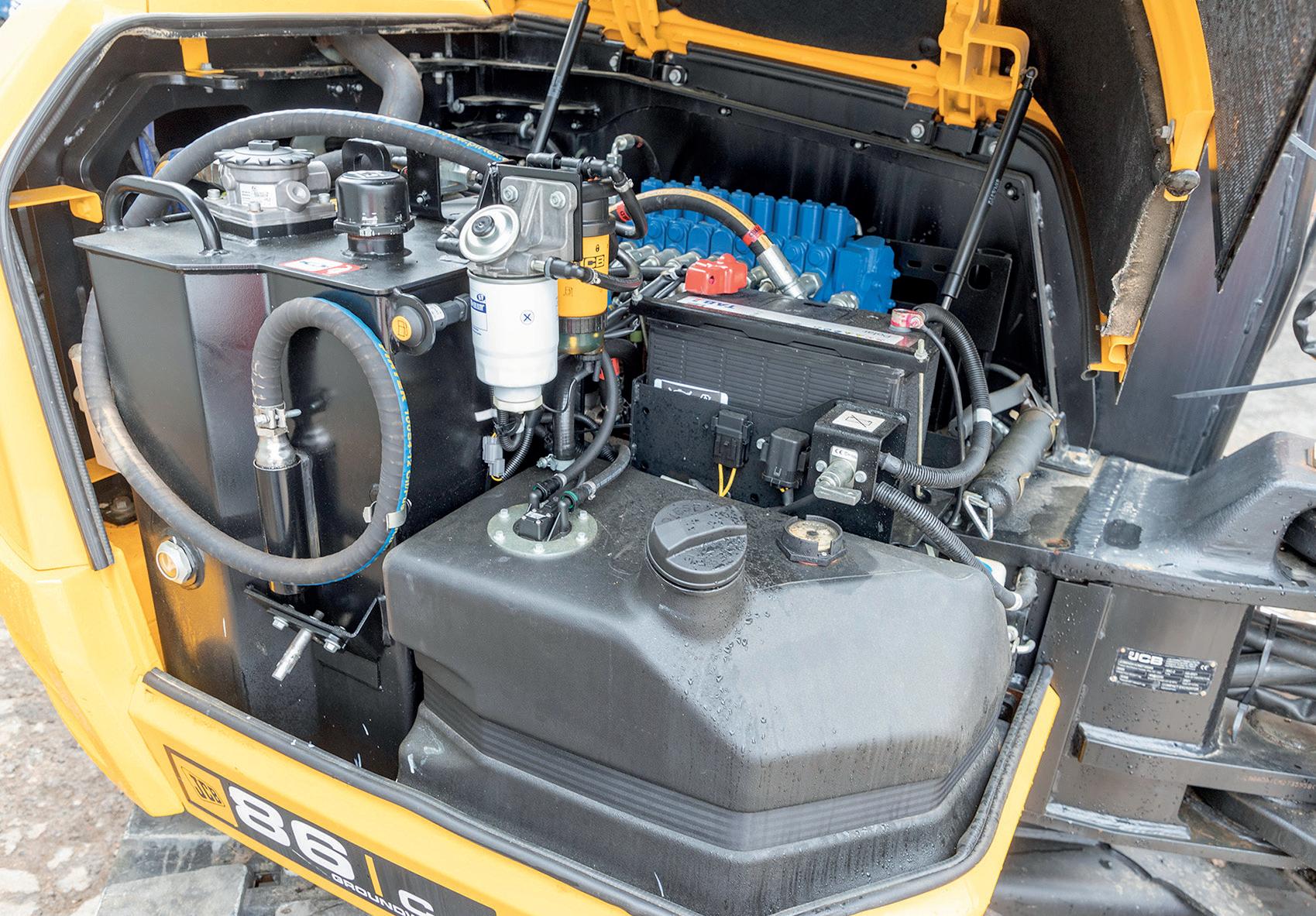















COMPARED to its previous midi excavators, operator space and comfort were improved when JCB first introduced its 86C and 85Z models in 2014, with a claimed 6 per cent more space and 11 per cent better visibility.
Air conditioning was then optional on the ROPS/FOPS structure, but there are useful storage areas around the cab, plus a radio and a cup holder.
The standard adjustable suspension seat could be replaced by an optional, heated air-suspended seat.
Take time to scroll through the monitor and check its functions work correctly.
It also provides 10 selectable flow rates for hydraulic attachment compatibility, along with a selection of single or doubleacting auxiliary flow.
JCB’s 2GO authentication requires two safety control inputs to operate, which reduces the risk of levers being operated from outside the cab.
The front windscreen offers a 70/30 split, with the top part raised and stowed in the roof space for those who want to bring the outside in.
For intensive maintenance access, the cab tilts 30 degrees rearwards on gas struts to enable access to the slew ring.
Tracking levers get foot pedals, and there are two digging modes - Eco for efficiency and Heavy for maximum performance.
JCB uses a graphite-based pin and bushing system on the 85Z and 86C’s boom and arm, which delivers a 500-hour greasing interval.
The zero-tail swing 85Z uses a 2.9-metre boom, while the 86C gets a 3.36m boom. Arm options differ too, with 1.65m, 2.1m and 2.25m versions available. At best, the 86C can achieve a maximum horizontal reach of 7.2m and a maximum dig depth of 4.5m, outreaching and out-digging the 85Z by almost 400mm and 800mm respectively.
It is a generous working range and should meet the needs of most farm ditches.

Check for pin and bush wear by placing the bucket on the ground and gently move the joysticks to ease load on and off the machine. This will soon show any excess movement that may need attention.
Pushing the arm out and lowering the boom will make it easy to check ram seals, pipework and look for stress cracks around any of the boom and arm joints.
Check the safe operation of the hydraulic quick hitch to ensure attachment security for those swapping between buckets, breaker and grab.

JCB’s 86C sits on an H-pattern undercarriage that uses five lower rollers and one upper.
It rides on 450mm Bridgestone rubber tracks, though some can be found with 450mm or 600mm steel tracks, or GeoGrip road liner options.
Pay attention to track condition, as replacement rubber belts, if needed, are likely to carry a price tag of around £1,000 each.
Check for cracks and splits, and assess tread depth - new items come with around 40mm of tread depth.
Ease one track off the ground by pushing the boom and arm down, making it easier to check roller condition, and assess how the track motors respond to speed changes.
JCB’s track frame design benefits from sloping side frames, making it easier to clean mud and debris from within the track assemblies.
Sagging tracks may need tensioning, which can be checked by lifting the front idler off the ground by pushing the blade down.
There should be 50-75mm of sag at the middle roller. Add tension by pumping grease into the track tensioning cylinders - if the grease seals are failing, track tension will slacken fairly quickly after being tensioned.
A fixed dozer blade is part of the standard specification, though a four-way tilt blade was an option.
Specifications
■ Model: JCB 86C
■ Machine weight: 8,600kg
■ Engine: Kohler 64hp
■ Tracks: 450mm rubber
■ Travel speed: 5 km/hour
■ Boom: 3.36m one-piece boom
■ Dipper: 1.65m/2.1m/2.25m
■ Max reach ground level: 6.6m/7m/7.2m
■ Max dig depth: 3.9m/4.3m/ 4.5m
■ 2021 JCB 86C-2, three buckets, 1,900 hours: £44,997
■ 2019 JCB 86C-1, four buckets, 1,800 hours: £39,995
■ 2017 JCB 86C-1, a/c, quick hitch, 4,900 hours: £29,950
■ 2017 JCB 86C-1, three buckets, 5,100 hours: £26,500
■ 2016 JCB 86C-1, two buckets, 3,100 hours: £25,000










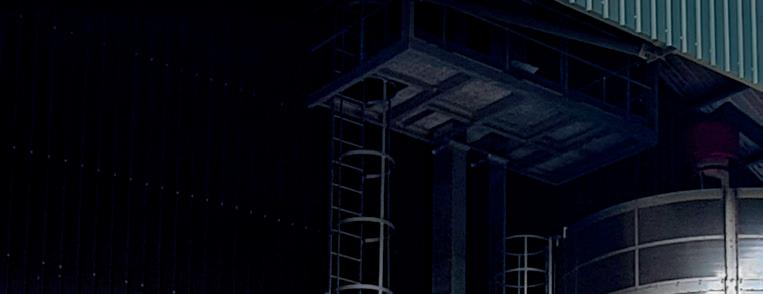
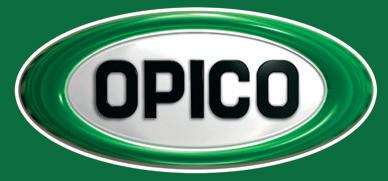

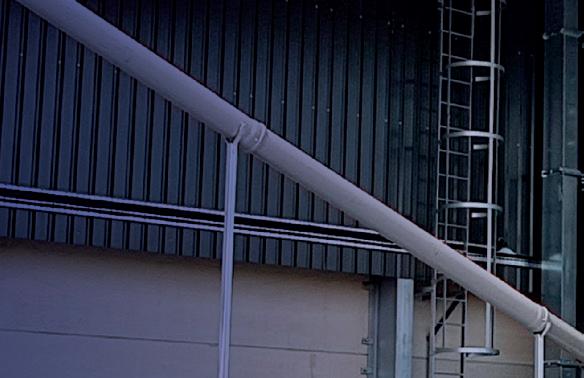






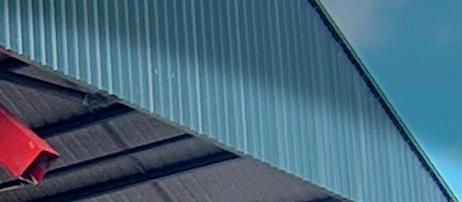

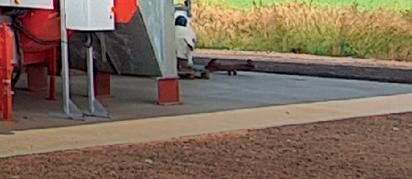


A pair of truck-mounted spreaders are at the heart of a Yorkshire-based contract fertiliser spreading business, favoured for their low ground pressure, all-wheel drive and brisk road speed. Geoff Ashcroft took a closer look at this specialised approach to spreading.
As many contractors know, choosing kit which is road-biased can contribute to reducing downtime when moving from farm to farm.
While tractors have increased in speed and payload in recent years, they will never quite match the ability to run as fast, or be as safe, as commercial vehicles.
That is why a Yorkshire-based contract fertiliser spreading business has opted to use two, four-wheel drive MAN trucks as the backbone of its operation.
Rob Falkingham, who runs Masters Spreading with business partner Andy Leek, says: “We are not earning while we are travelling. So if we can shorten our journey times through specialist equipment choices, then there is an opportunity to boost output and work more efficiently.”
The pair bought the business in 2018 from their in-laws, Rob and Lorraine Masters, and have been building on the foundations already laid from 50 years of operating history.
As Mr Falkingham worked for the firm before buying it, he has solid knowledge on what makes the best self-propelled spreader.
“Without doubt it is a truck chassis carrying an AS 2000-series spreader body, as proved by Rob Masters when he bought the first MAN for the business in 2012,” he says.
“That first TGM 13-290 chassis cab replaced a Unimog U400 after I saw it in a brochure featuring a MAN truck carrying a Gustrower spreader.”
The 290hp 4x4 truck offered a 15-tonne gross vehicle weight, giving

the firm a road-legal payload of 6.5t. When loading in-field, payloads can be up to 12t, depending on the product.
Mr Falkingham says: “Buying a 4x4 chassis cab proved to be around one-

third of the cost of a replacement Unimog. Everything was driver-focused in terms of comfort and ergonomics, along with a 90km/hour road speed.”
But he says the biggest advantage over the Mog was weight distribution.
“A lorry uses a forward-control cab over the front axle, meaning our spreader body could sit forward rather than have the bulk of its weight sat over the rear axle,” he says.
When the first MAN arrived, it was shod on super singles and, regardless of its 4x4 drivetrain, addressing compaction was the first area under scrutiny.
“We played about with wheel and tyre options and quickly found out that tyre choices were much more limited than they are with tractors,” he says.
“We needed to find a combination that suited high-speed road use, while allowing good flotation and loadcarrying ability when in-field.”
While the MAN’s rear axle could carry 710s, the front axle was restrict-
ed to narrower 445s to avoid fouling the steering geometry and suspension.
Since taking over the business, Mr Leek and Mr Falkingham have made several modifications, including the integration of a central tyre inflation system, to help manage compaction.
“We put a TractAir system on, which drops tyre pressures to 1.3-1.7 bar for field work in around 20 seconds, and this soon became a game-changer. And it is adjustable on-the-move,” says Mr Falkingham.
Tyres
Using the truck’s on-board air system, CTIS re-inflates all four tyres to 4.1 bar for road transport in around 20 minutes.
When the business bought its second truck in 2022, they replicated the specification, adding a Bigfoot central tyre inflation system, which inflates tyres in just 10 minutes.
“The newer truck gained a larger AS spreader from Dales Agri Services along with weigh cells,” he says.
We needed to find a combination that suited highspeed road use, while allowing good flotation and load-carrying in-fieldROB FALKINGHAM
“And we plan to replace our 12-year-old 11,000-hour TGM with a newer version this year, with an identical AS spreader set-up.”
Masters Spreading applies around 13,000t of product each year, working in a 60-mile radius of its base at Cedar Grange, near Goole.
While Mr Falkingham and operator Rich Bell spend their days in the cabs of the spreaders, Mr Leek provides an ATV-based soil sampling



service from which he can generate bespoke prescription maps for the two spreaders. With the capacity to test up to 120 hectares per day, Mr Leek tests around 2-3,000ha per season and has so far sampled more than 10,500ha for customers.


The data captured enables him to develop variable rate maps in addition to blanket applications for a wide variety of lime and fertiliser products.
Mr Leek says: “We apply fibrophos, lime, gypsum and pretty much any off-spec granular product.
“There is not a lot you cannot put through a belt-type spreader and we will also produce blends in our yard, to suit local veg growers’ specific requirements.”
Importantly, Mr Leek uses his discretion to vary in-field sampling,


2024 sees AMAZONE celebrating 75 years of seed drill production, not a bad track record and meaning that you know you can always trust an AMAZONE drill to get your crops established well. No matter whether it is a 3m drill combination or a 15m trailed disc drill, it qualifies for our £75/ROW FOR 75 YEARS special offer.
Buy an AMAZONE drill between now and 30.06.24 and take delivery before 31.12.24 and benefit from an additional £75/row saving.




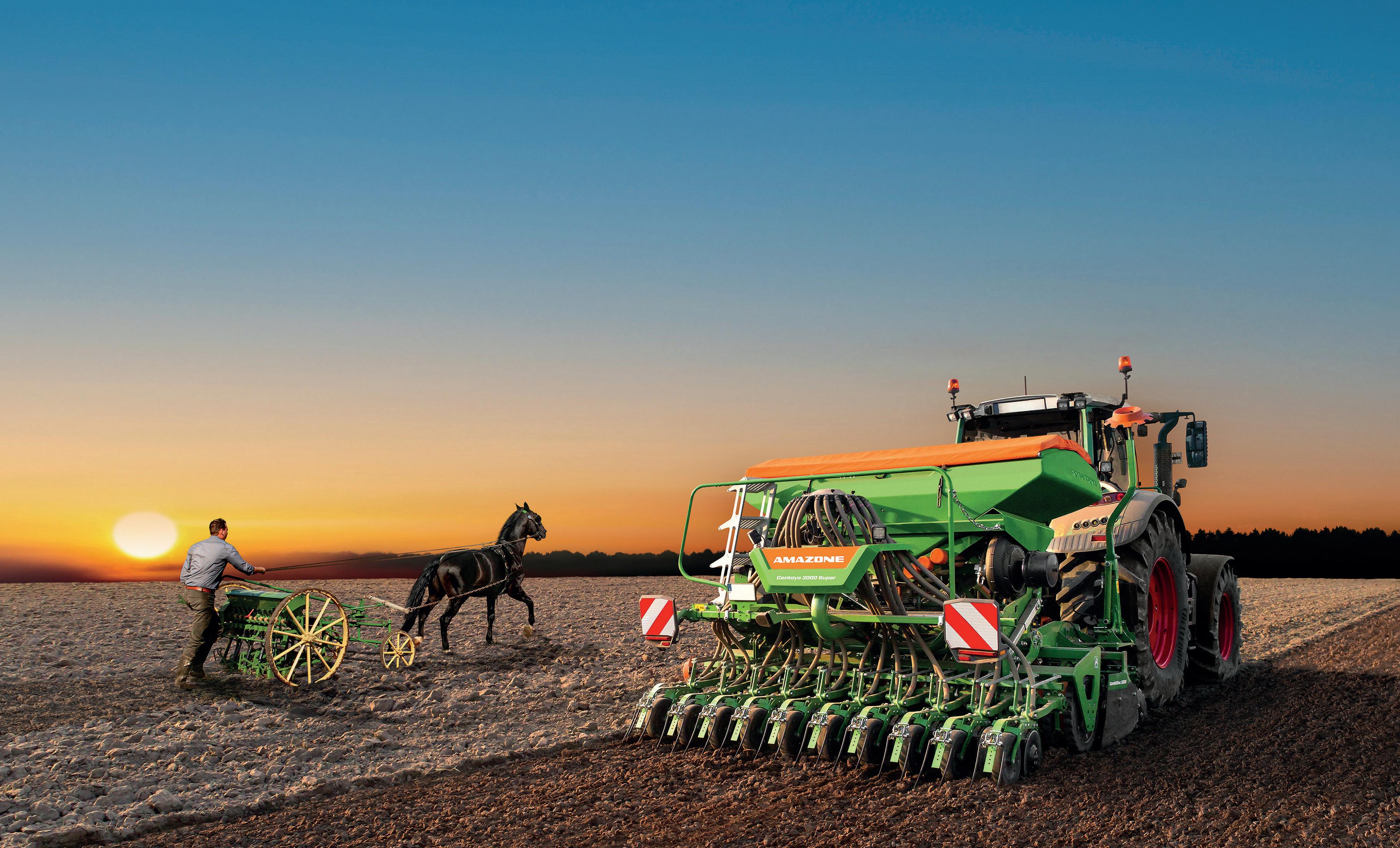




rather than stick rigidly to 1ha blocks.
“If I find a hotspot I can work around it to improve accuracy for customers. It just creates a far more precise result,” he says.
Carrying out its own tray testing service, Masters Spreading operates at working widths from 12-18 metres, but has the capability to hit 36m, depending on the product being applied.
Trimble screens and lightbar guidance provide the spreading accuracy required, with forward speeds nudging up to 30km/hour in-field.
Mr Falkingham adds: “We do have some great output potential from each outfit.
“And with bespoke loading equipment too, each rig is a one-man spreading solution.”
When the two MAN TGM 13-290 self-propelled rigs go to spread product already tipped in-field, both will be towing Italian-built Comaf loaders with clamshells behind the trucks.
“With a loader that sits on a highspeed chassis with air brakes, we do
not need a low loader trailer and a telehandler to accompany either spreader,” he says.
“It is a simple and effective solution which also results in fewer wheelings and less mess in-field as the clamshell bucket leaves a clean surface.”
But when bulk spreading from the yard, logistics remains the firm’s biggest challenge as a result of the MAN’s low payload capability.
One truck uses an 18t skip trailer converted to carry a stainless hopper and Palfinger crane equipped with a clamshell.
Mr Falkingham says that the twin-axle trailer is lacking in payload, but proved to be inspirational for the business’ latest chaser bin trailer.
Based on a Dennison tri-axle skeletal trailer that was used for 20-foot containers, it features a bespoke hopper on a parallel hydraulic linkage, enabling it to be hoisted into the air so the spreader can reverse underneath it to load.
Mr Falkingham adds: “We found a pair of Telstar spreader bodies and

cut them up to make one longer body from the two.
“This has doubled our on-road payload for this season, and enables more to be carried in the trailer than in the truck, and staying safely within the 31t gross combination weight of the truck and trailer. It also reduces wear and tear on the MAN’s tyres during transport.”
Rather than add a complex power unit and hydraulics to the trailer which would compromise payload, they looked to make the most of the MAN’s pto-driven hydraulic system that is used to run the spreader.
Mr Falkingham says: “When I get to the field, I deploy four jack legs to level the trailer, then use the MAN to lift the chaser bin body, so it is ready to transfer fertiliser before I uncouple.
He says: “To load the spreader, I only need to couple up my hydraulic pipes and run the belt. It takes around two minutes to transfer 7.5t into the spreader. It is impressive, and means
we can take more product to the field with each trip.”
He says the first load he carried in the trailer soon highlighted how fertiliser can pack tightly during transport.
“By the time I got to the field, fertiliser had bridged above the belt so it would not unload. I had a bit of shovelling to do,” he says.
The pair created an auger cover similar to that used in combine grain tanks, which helped to regulate the flow of fertiliser onto the belt, and also prevent the belt from being over-loaded. However, fertiliser could still pack tightly on top of profiled auger cover.
“I found that by sitting one end of the cover on the rear door, I could use the hydraulic door to lift and loosen the fertiliser simply by opening the rear door,” he says.
“It is a simple fix to what could have been a challenging problem.
“And the entire outfit has improved logistics and output potential quite considerably.”

A modern front tank and combination drill is offering one user extra capacity, reduced compaction and the flexibility to operate in tricky conditions. Farmers Guardian reports.
Moving to a minimum tillage system, and ploughing one in every four years, was a catalyst for the Birchalls to revaluate what drill would best suit their operations.
Ian Birchall, who farms in partnership with his brother David, says: “We initially wanted a trailed drill, which would offer us the increased output we craved. However, after demoing six-metre versions of the Kuhn Espro and Horsch Pronto, we liked the finish but were unconvinced that the trailed configuration would provide the flexibility to drill in less-than-ideal conditions.”
The farm in Rainford, near St Helens, Merseyside, ran an existing 3m combination which did not provide the required output for the ar-
able cropping area, with a comfortable 25 hectares/day being the minimum requirement. The farm needed one drill for all soils, which meant it still required something that could breakdown ploughed land. This eventually led them to purchase a new 4m Kuhn power harrow with seeding bar and a Kuhn TF 1512 front tank.
Ian says: “We thought hard about the system and, once we realised a trailed drill would not work, we reverted to the combination combined with the front tank, as it allowed us the same capacity as the two drills we demoed, but the versatility to deal with all seedbeds and conditions.”
As the Birchalls planned to use
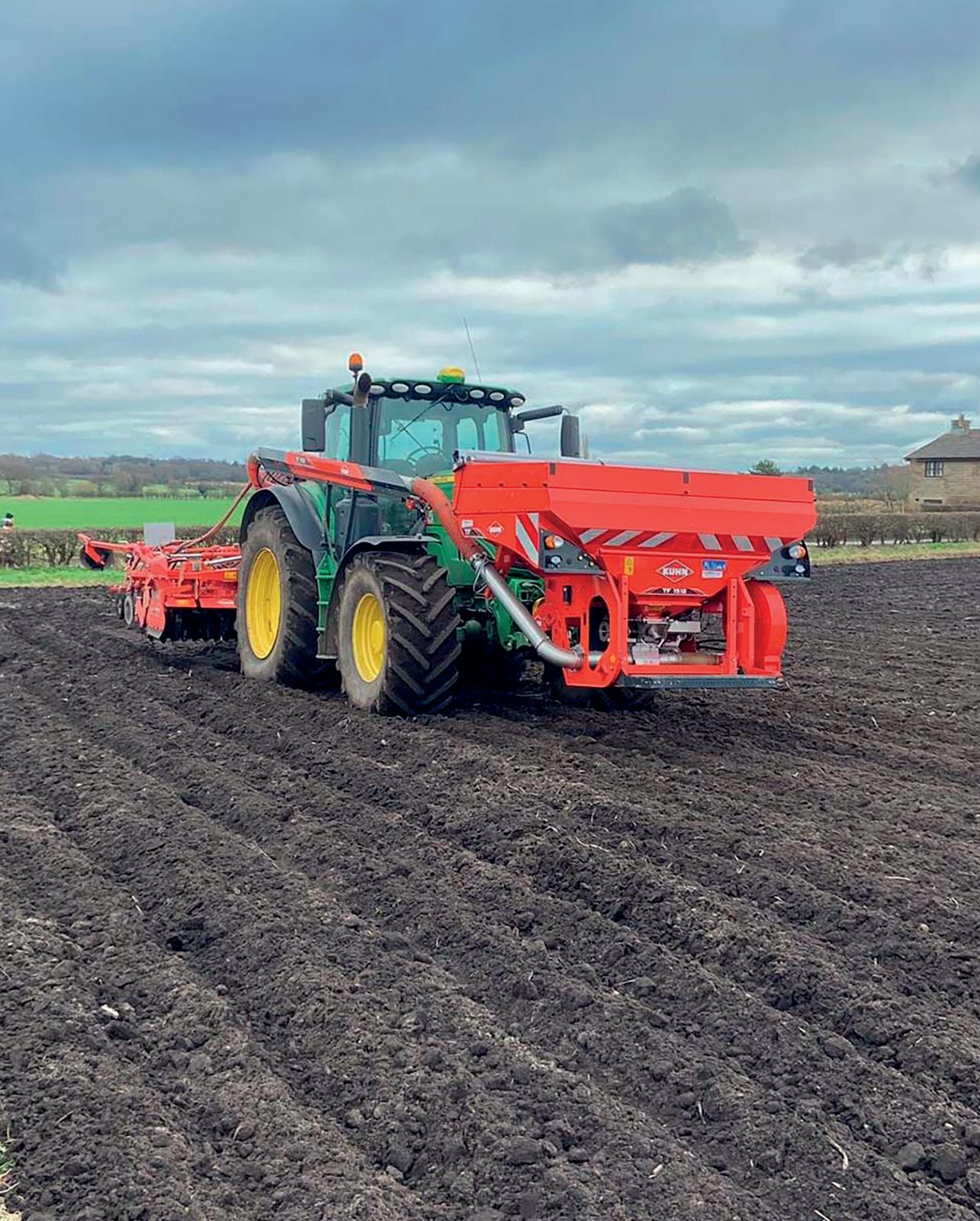
the drill on min-till land which had received one pass from a Rabe Combimix cultivator, they chose wider row spacings to increase the distance between Seedflex counters for trash to move through the drill.
The drill arrived in October 2022 and the purchase of the TF 1512 was the first time the farm had used a front tank. However, across the first two seasons, it not only provid-

ed them with the drilling flexibility, but offers the business more options going forward.
“The front tank has futureproofed us in several ways. We can use it on multiple machines, including other manufacturers’ implements. For instance, we could easily put a distribution head on our cultivator and use the front tank to supply it, or switch the tank to feed









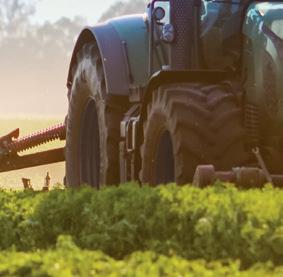





Ian adds.
By removing the weight from the rear of the tractor, the Birchalls were able to spec a wider folding power harrow and matching seeding unit. They wanted to avoid a rigid machine due to complications it could present with road transport, and, although the front tank is a long outfit, the even weight distribution is a benefit in the field.
Ian says: “The front tank is 2,000 litres, which easily holds three-anda-half 500kg bags of wheat seed to supply us for most of the day. How-
ever, the biggest advantage is the weight distribution from front to back. The tank counteracts the weight of the power harrow, so compaction is reduced, and we can get on the fields quicker due to the combined weight being distributed evenly ensuring it only leaves a light footprint.”
When ordering the tank, the Birchalls had the option to go for press wheels to support the weight, but this would have had a negative impact on the weight distribution and the full width would not be covered by the wheels.
Ian adds: “The TF’s optional
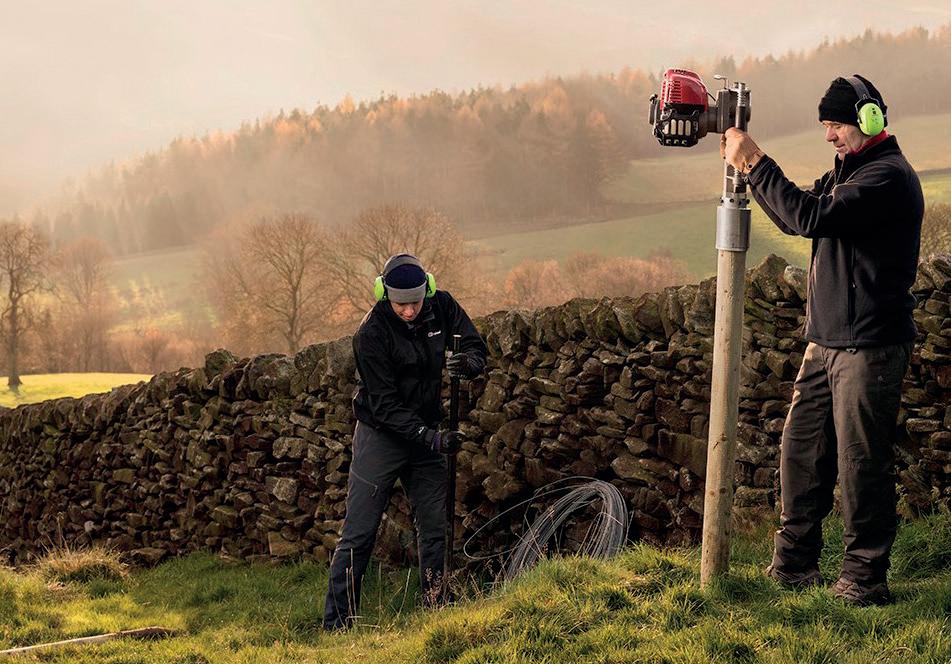
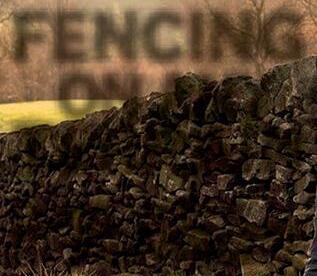
press wheels only pressed in the centre of the tractor’s wheelings, which meant there would be unpressed strips each side. We wanted to ensure that the seed emergence was consistent across the full drill width, so opted to carry the front tank on the link arms.”
Another advantage from the combination has been the ability to ballast the tractor more effectively to reduce compaction. The Birchalls can now apply extra weight to specific areas, rather than adding ballast at the front to correct the weight of a rear implement, to achieve the optimum traction and reduced compaction.
Calibration of the drill is simple with one roller for all seed sizes. The operator selects the pre-saved crop in the display which offers a rough density. Once the desired application rate has been entered, a couple of calibrations are required via the push button on the side of the drill, and the machine calculates the size of the opening for the target rate. Ian says this has reduced calibration times significantly.
“We can now calibrate a new seed in five minutes, whereas this was more like 20 minutes with our old 3m combi. The machine also saves previous settings, so if we return to a seed we have already calibrated, we select the variety in the
seed list and the machine remembers the settings. It is also much safer, as there is no climbing over the drill to fill up and calibrate.”
In the field, the TF has an automatic work mode alongside the tractor’s implement management system making controls very simple. The tank can also be set-up to work with wider implements, as a setting to change the width allows the tank to meter the right amount of seed to match.
Choosing the wider 150mm row spacings, replacing the standard 125mm widths, has reduced the number of outlets across the drill and increased the room for chopped straw and soil to pass
We have been surprised how flexible the front tank has been and how many smaller benefits it has offered us as a business
IAN BIRCHALL


through. This has big benefits when drilling in wetter conditions and allows the farm to get on the land earlier after bad weather, while the clearance between the power harrow roller to the first disc aids trash flow.
Fewer outlets
There are five fewer outlets – 27 rows instead of 32 rows – which Ian says not only has operational benefits of a lower overall weight and horsepower requirement, but it has improved crop emergence as well.
Ian says: “We have seen much better tillering from crops due to the wider gaps between the rows offering the plants additional light and space. Another benefit has been an even emergence. We are not getting patches of fields ahead of others as the seeding depth remains consistent across the width. The disc coulters are mounted on a parallelogram linkage and the fol-
lowing press wheels have helped with seed to soil contact.”
Setting the depth of the power harrow tines is still manual via pin adjustment as hydraulic was not available at the time, although coulter depth is set hydraulically via removable shims. The tines are set to just tickle the surface when on min-till land to eradicate tractor wheel marks, and, in ideal conditions, a comfortable 3.7-4ha/hour is possible.
The combination has allowed the farm to retain flexibility of its drilling throughout the year, and the addition of front tank has provided the output of a trailed drill, with the versatility to cope with a wide range of soil types.
Ian adds: “We have been surprised how flexible the front tank has been and how many smaller benefits it has offered us as a business. I do not see a reason to consider a trailed drill in the future now we have the front tank.”
We manufacture, supply & build...
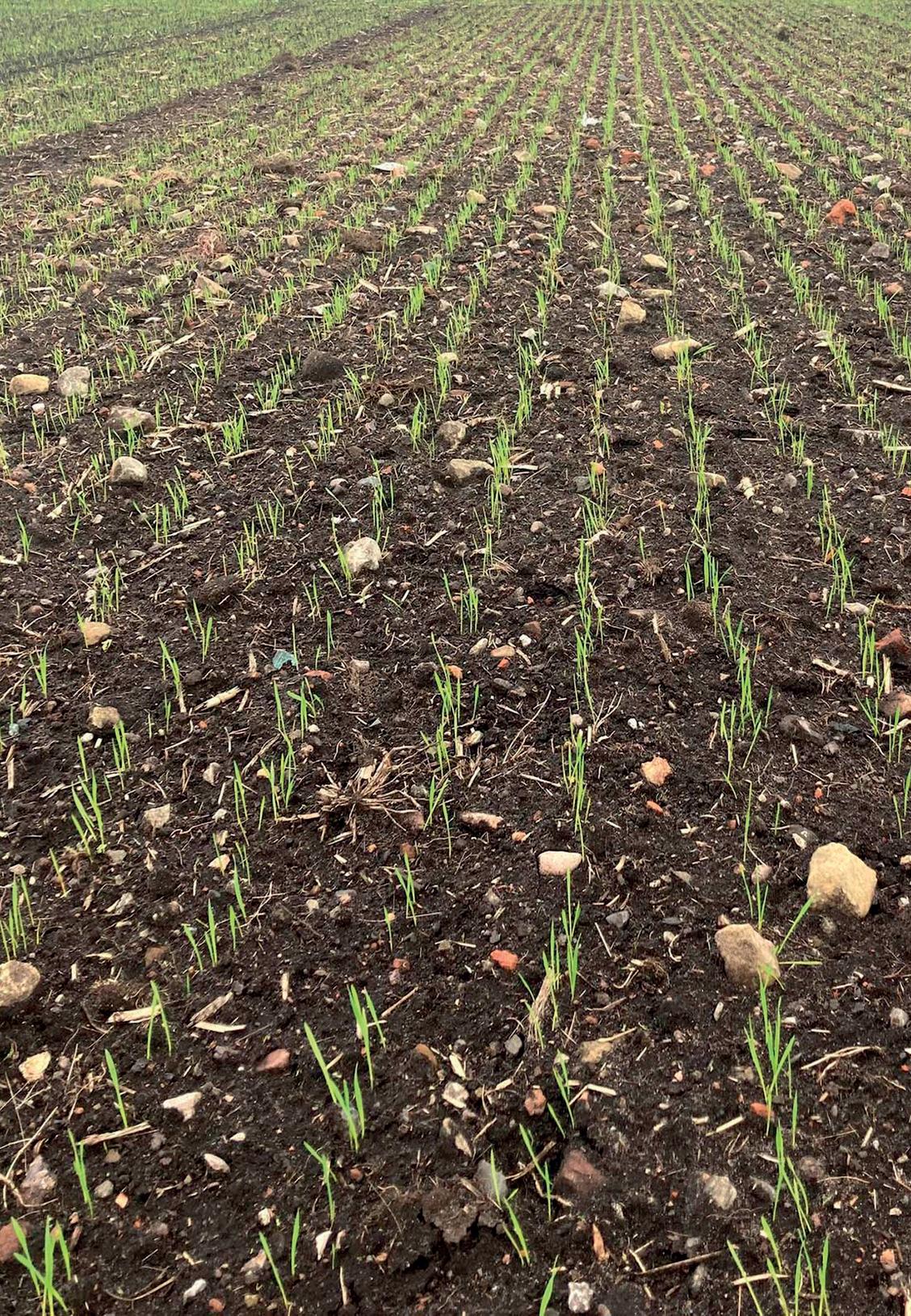

Mounted at the front of the hopper the metering unit is easily accessible, without the need to climb around the coulter bar.

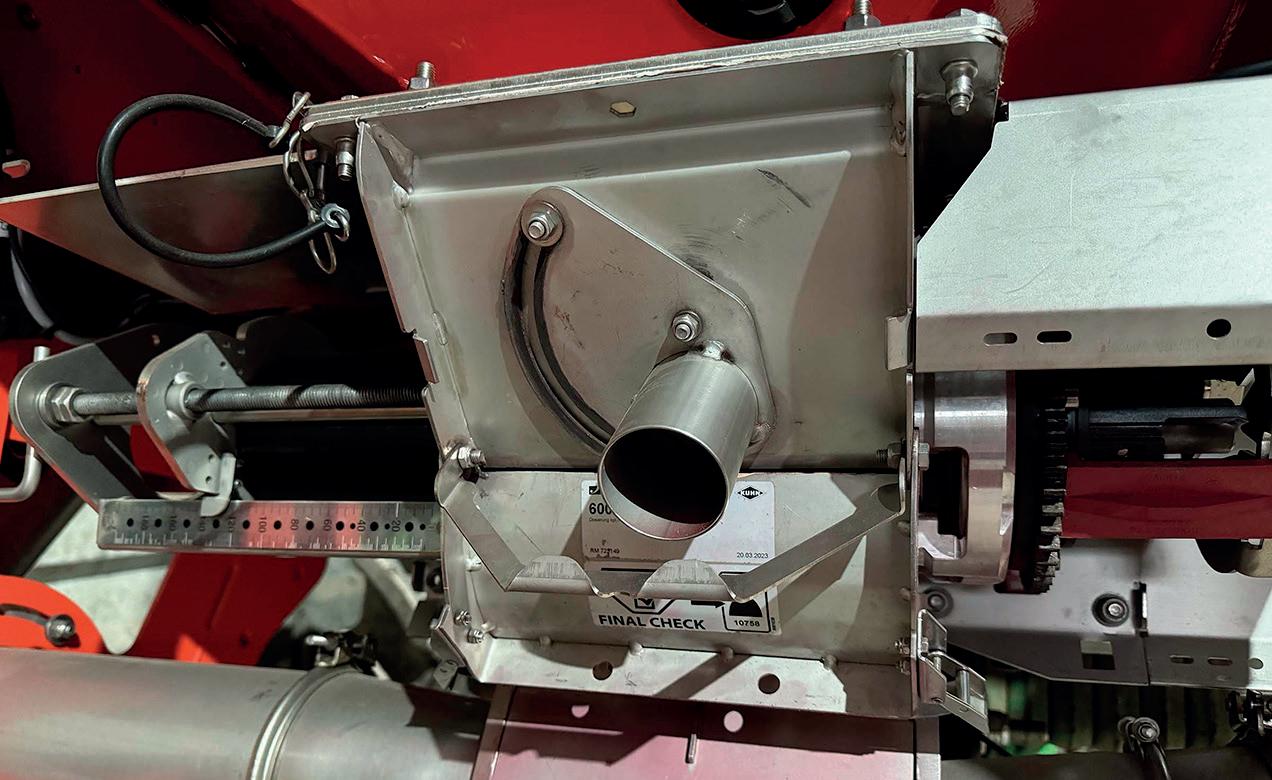


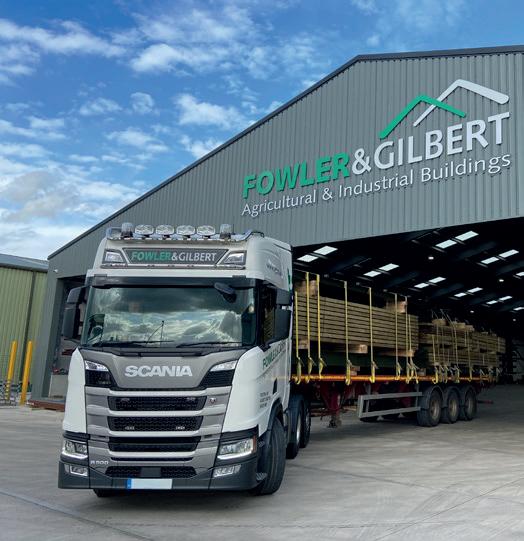





Granular fertiliser offers benefits for large farms and, where a trailed spreader is equipped to handle fertiliser as well as lime, these machines could be good for covering the hectares. Jane Carley meets a business with a high-spec Bredal.


Fitting neatly into the large-scale farming operation at Wrights Agriculture, a Bredal K105 trailed spreader is kept busy most of the year spreading both fertiliser and lime.
Eric Wright says: “We had expanded our acreage of contract farming and farm business tenancies and needed to increase capacity from that offered by a Bogballe mounted spreader.


“We liked the fact that the Bredal offered the same double/double overlap spread pattern which gives greater accuracy without relying
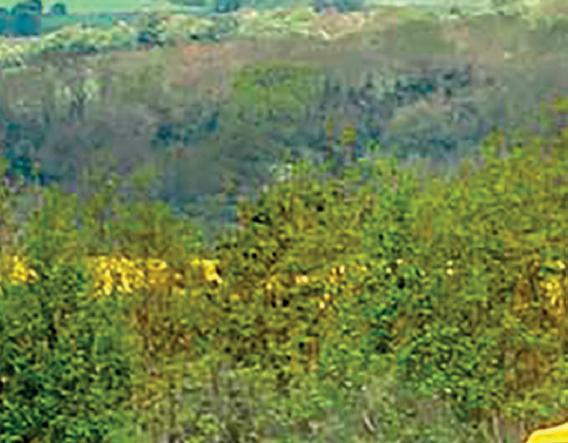




too much on settings as we spread a range of products of different qualities.”


In recognition that the trailed spreader represented a significant investment compared to a mounted machine, it was specified with a lime kit as well as the fertiliser set-up, allowing the business to take lime spreading back in-house and potentially generate further income.
“We also wanted a high specification – many trailed spreaders are quite basic.
“But the Bredal was specified with a hydraulic drive belt so we can use it for variable rate spread-


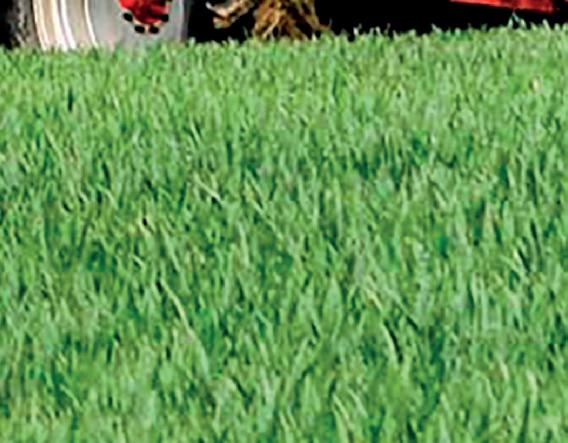



ing. It is very accurate; when it is tested by Spreader Calibration Services the coefficient of variation is less than 5 per cent.”
Minimise
IsoBus control allows operation from the Greenstar terminal in the John Deere 6215R or 7350R used to pull the spreader, including auto on/off according to an application map to minimise overlaps and rate reduction for short work.


“We can be very precise. It is easy to get the tonnage of fertiliser applied to match the GPS-mapped block with little operator intervention.”
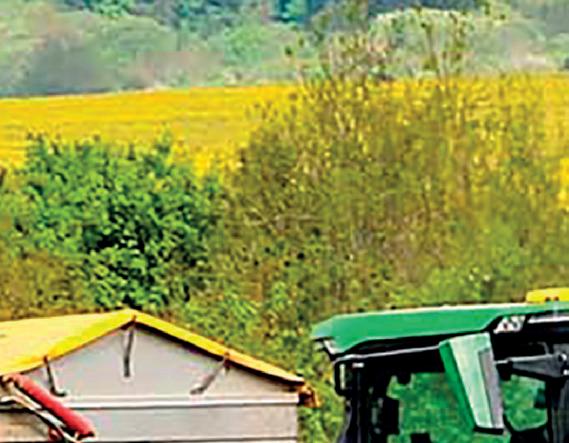




The 7350R, he says, is slightly overkill, but the job makes good use of the tractor in the spring months; another advantage over a mounted spreader is that the tractor stays much cleaner being further away from the fertiliser dust.
Large discs and a high spread point, aided by large diameter 710/ R42 wheels which also give a light tread and the carrying capacity needed, mean that fertiliser can be spread accurately to 36 metres.

Bredal’s smartphone app gives settings for the required product and Mr Wright says that once the Greenstar was set up and the

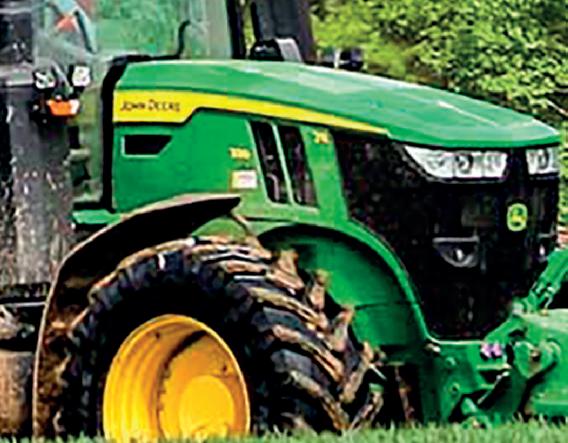






settings were saved on the ISO controller, operation was seamless.
“The steering axle is controlled via a gyroscopic sensor on the back of the tractor rather than the physical linkage of a potentiometer; it is simple and effective, but was an
expensive option that was really only needed for the late applications,” he adds.
Another extra, fitting a hydraulic cover, keeps fertiliser clean and dry.
He also praises the good roading ability of the spreader,



which is equipped with air brakes. Mudguards were retrofitted by Mr Wright, who says they should have been specced from the start.
The working year for the Bredal starts as soon as the ground is fit to travel with early nitrogen, plus

phosphorus and potassium following through spring.
Mr Wright says: “We might do some lime in the spring, but generally the machine is too busy with fertiliser. However, it is an easy change-over – we just swap the




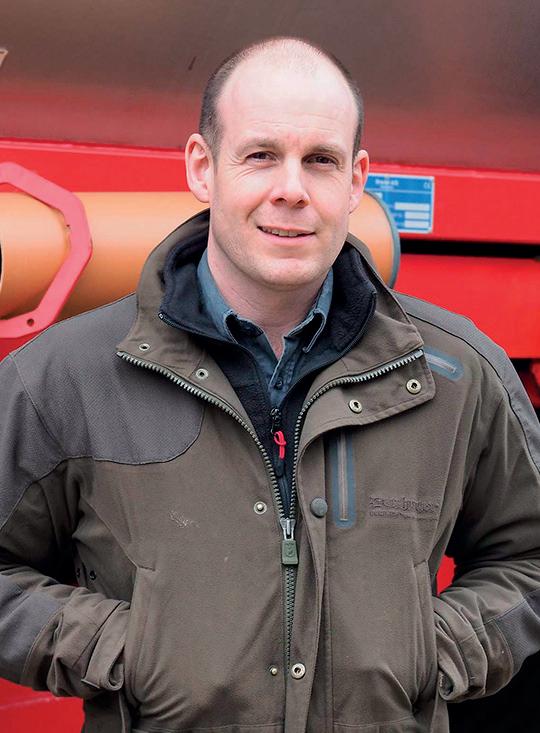
spreading discs and distribution aperture, which takes half-an-hour at the most.”
With its steering axle and the fitment of row-crop tyres, late applications of N can be made to standing crops, he adds.
“It is a good way of applying late N to milling wheat and avoids having to spray at night to avoid scorching with foliar N.
“It is a nice time of year and we can be working long days, without having to work nights as well ahead of the busy harvest period.”
The Bredal K105 has a 10-tonne capacity (ammonium nitrate) and applies 1,500-2,000t of fertiliser and 2,000-3,000t of lime per year.
“The output per day is double that of our liquid fertiliser operation – we can cover 400 hectares/ day in decent-sized fields.
“Small fields, poles, etc., are not an issue in the way that they are with a sprayer.
“We support the spreader with a loader tractor and flatbed trailer to cut the downtime; we have also
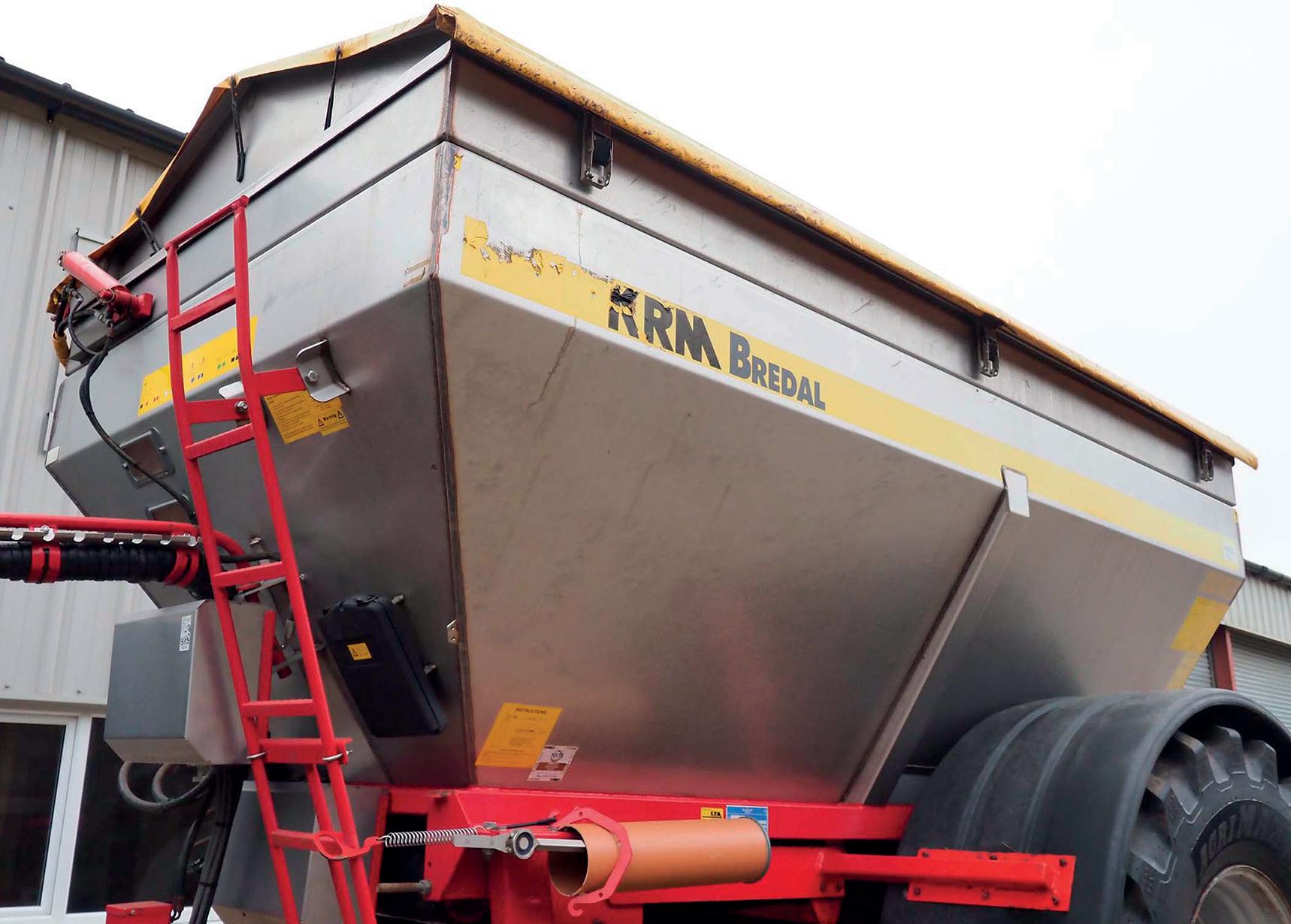
fitted a double spike inside the hopper so that the loader can drop the bags in and there is no need for anyone to go inside the hopper to cut them.”
Delivered in spring 2019, the Bredal was financed over five years and Mr Wright says that he would expect it to do at least another five years.
Costs have been low – a couple of belt replacements – while the spreading discs are still fitted with the original vanes.
“It is only the initial outlay that has stopped us from purchasing a second machine.
“We would definitely buy a second-hand Bredal on the strength of the build quality if one became available.



“We have a mounted spreader as backup at peak time, as well as the liquid fertiliser capability from our John Deere trailed and self-propelled sprayers.


“The Bredal is a big, imposing machine that can cover the ground in good conditions; in the wet, you do not need to fill it, we can just keep it topped up.”


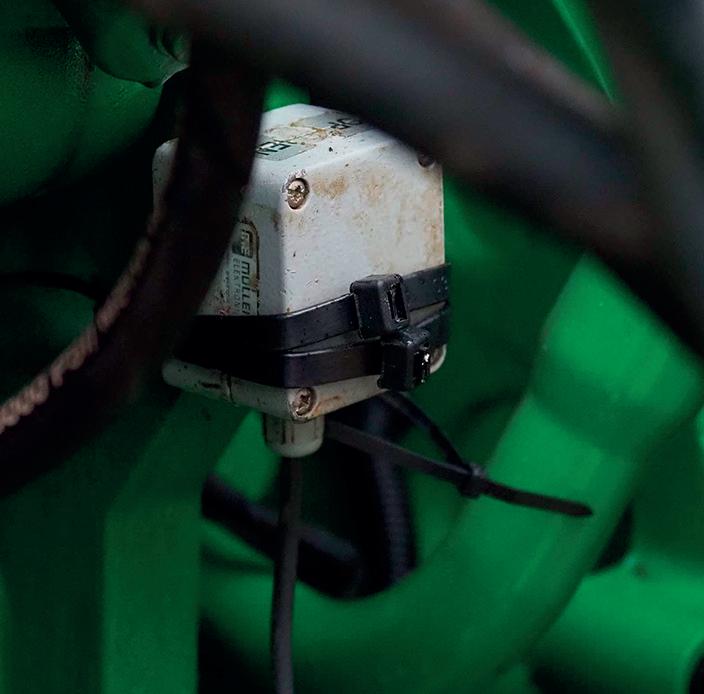


With a family business that has seen its acreage grow to 5,000ha in recent years, getting the machinery fleet right to offer the required capacity is crucial, and the Bredal has proved to be an important part of the jigsaw.





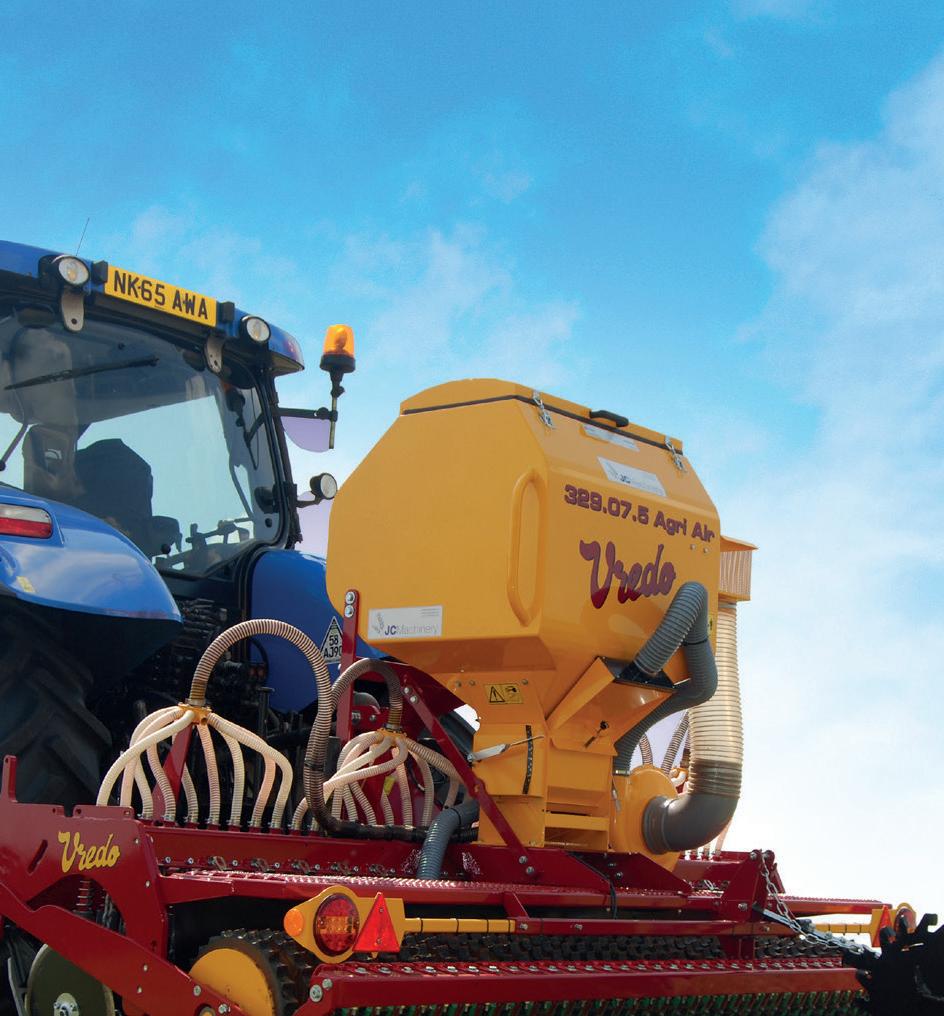
Operating on a single set of wheels on steep inclines can limit traction and stability. One hill farming family in Wales has overcome the terrain by operating dual wheels from Stocks Ag. Farmers Guardian reports.

ince moving to Esgair farm, Llanidloes, mid Wales in 1950, the Rees family have become accustomed to the use of dual wheels.
James Rees says: “We are pretty much in the heart of Wales, on quite a steep hill farm, battling against the terrain to grow grass,.
“We are huge believers in dual wheels – apart from the wheel barrow, everything has dual wheels here,” he adds.
Mr Rees and his family, parents Dilwyn and Sylvia, wife Danielle and their three children, Drew, Teifi and Luke, run six tractors, four of which are New Hollands.
Mr Rees says: “All four run on 30inch Stocks Ag dual wheels, we made sure that all four tractors run on the same wheel size so that all dual wheels could be interchanged depending on what job each tractor had on.”
The Rees family’s fleet also includes a Massey Ferguson 35X and 135, both on studded Ferguson dual wheels.
The terrain at Esgair and surrounding farms is challenging.
“We have a neighbour whose land is severely steep. When he is baling square bales of hay with a conventional baler he has to bale across the field, his front left wheel will sit above the row he is baling,” says Mr Rees.
“Dad has always been known to run on dual wheels, but at the time we used to pull them on and off regularly.
“The trouble with studded wheels is that the more you take them on and
off, the more the threads rub. They then get damaged, and then you have to replace the twin wheel studs.
“In 1999 we bought our first pair of Stocks Ag standard duals, they were 16.9x30 with the old red clamp system with the spring clip on the outside to lock them off,” he adds.
However, he quickly realised that standard duals were making some tractors too wide for the three-metre (10-foot) gates.
Mrs Rees says: “We purchased a brand-new set of Stocks Ag step-down duals which reduced the overall width of those tractors to just over 9ft, enabling us to get through our gates.”
Mr Rees discovered the step-down dual wheel version while working for a local contractor.
“We have kept on buying Stocks duals because we like the ease of use and the safety, we have never had an issue with the clamp system.
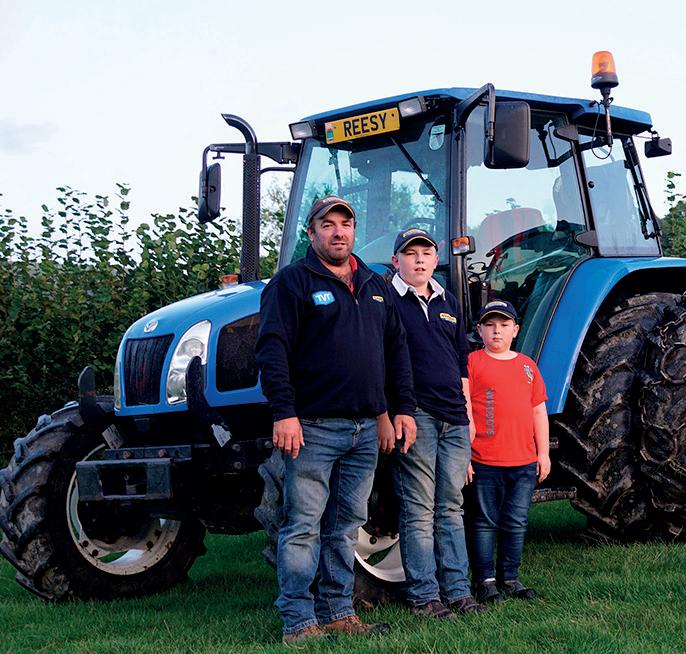
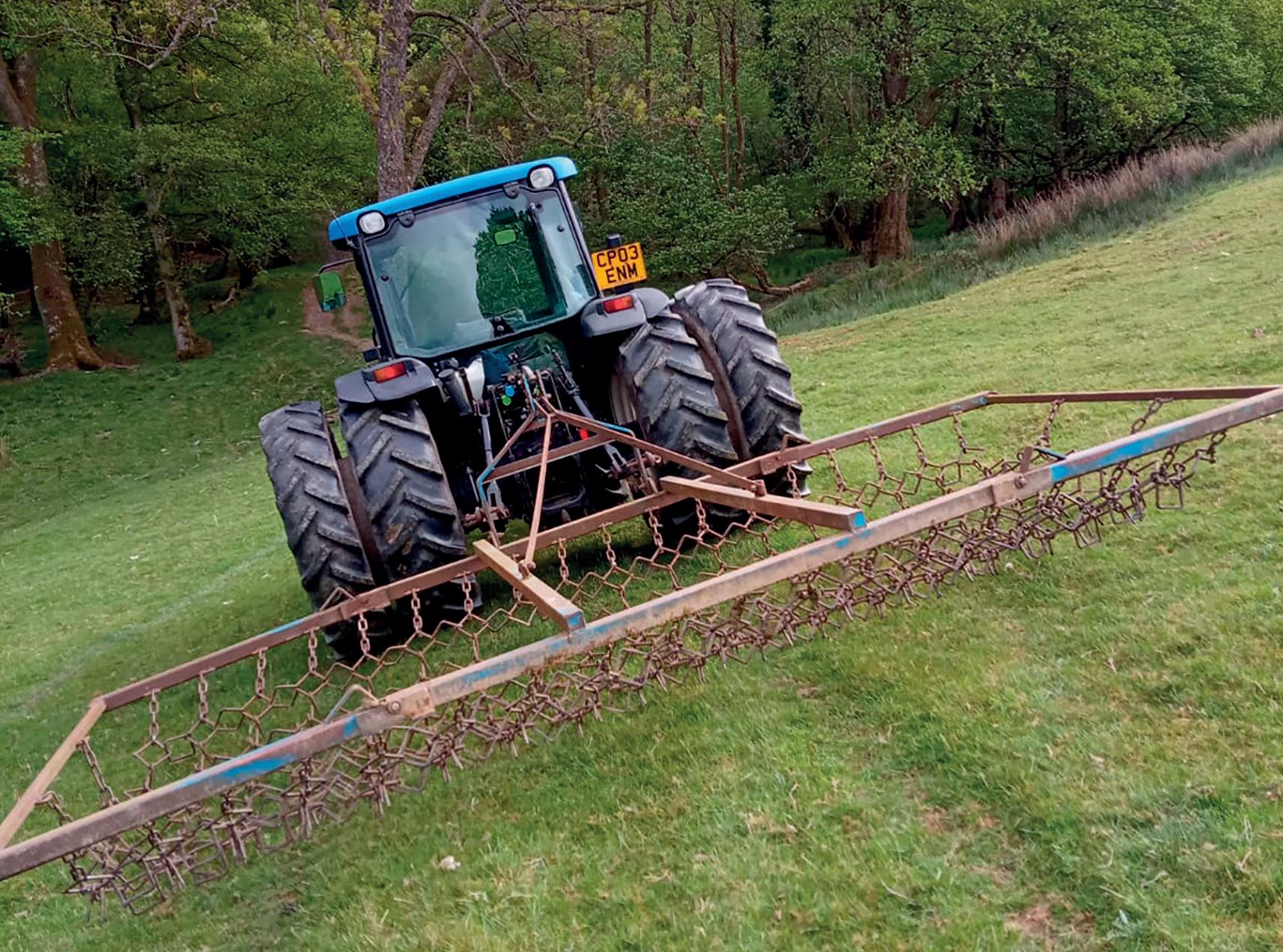
“The clamp and power rail design is a terrific system, very effective, we have never had a clamp undo or bust. It is a system you can rely on which is critical when you are in positions and a landscape like we are,” he adds.
“With the Stocks, they are so quick to fit, five minutes and you have got a pair on, we have got it down to a tee.
“All you need is a block of timber to drive onto, roll a dual wheel to the side of the wheel, put the clamps on and you are away.”
One top tip, Mr Rees says: “If you are putting them on yourself, you have got to be organised, the clamps need to be nearby and you must be sure to fit the top clamp on first to take the strain.”
In total, the Rees family have two sets of Stocks Ag standard dual wheels, and two sets of Stocks Ag step-down duals.
Mr Rees says: “One set came from a potato grower in Pembroke where the wheels had originally come off a Fastrac. The final set were bought in the spring of 2023 from Lampeter.”
At Esgair, Mr Rees and his father used to employ a contractor to cut their hedges, however, the contractor could never complete the job as they only ran on single wheels.

Mr Rees says: “He had a New Holland 7840 and a McConnel PA96 contractor trimmer – excellent for what he wanted, but not much good on steep ground.”
Mr Rees and his father would then have to cut what the contractor could not get to with the set-up they had at the time – a mid-mounted hedge-cutter on their MF 35X fitted with duals.
“We then fitted our New Holland 4835 and McConnel hedge-cutter with duals and managed to get business from nearly 15 local farms as a self-employed hedge-cutting contractor,” adds Mr Rees
“Stocks standard duals come into their own when topping bracken and hedge-cutting on the steep banks.”
With more than 55-degree slopes in places, operating without duals is not worth the risk. As such, Mr Rees also invested in some forestry chains to add to the duals when working in certain conditions.
Although Mr Rees picked up a lot of the hedge-cutting contract work because of his ability to go further than others on steep banks, farmers also opted to use him if they required reseeding work.
Their tractors fitted with standard duals were able to spread the weight and reduce damage to the fields.
The duals also get an outing at Esgair during fertiliser application.
Mr Rees says: “The fertiliser will always be on the wrong side of the hopper, it will always flow to the bottom side, no matter what way you travel.”
In addition to stability, duals also offer flotation benefits.
Mr Rees found that to further minimise compaction in late harvesting seasons, having another set of dual wheels for the loader tractor reduces the amount of puddling on the drive up to load the bale trailer, as the

harvest ground is quite heavy. Against the norm, but in wet harvesting seasons, Mr Rees says: “We have also been known to run duals while mowing, it is not the tidiest job, but needs must some years.”
Duals are also used when tedding to minimise crop damage.
Although Mr Rees purchased
step-down duals to allow his tractors to fit through the gateways, a unique benefit was noticed when harvesting with them.
He says: “The tractor and baler could fit between two Haybob swaths without trampling the crop.
“Once my father had been around and back on himself with the Haybob, I can fit between the rows with the TL100A on step-downs and the baler,” he adds.
Away from farming, their standard duals have been used on a neighbour’s garden.
Mr Rees says: “She has got quite a big garden that she leaves for wildflowers, it is not steep, but we go over it with duals and a topper so as to not leave a footprint.”
Stocks duals have been a big part of farm life at Esgair for 25 years.
Mr Rees says: “Dual wheels are definitely worth the investment, there is not a mark on the step-downs we bought new, they do not deteriorate.
“We would not be without them on a hillside farm, the terrain we go on, you would be a fool to go on there with singles, with my lads coming up now and starting to use tractors, safety is paramount,” he adds.





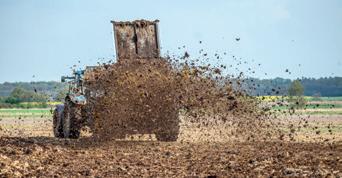







The Farming Equipment and Technology Fund window for applications closes on April 17, 2024, with two more rounds expected later this year. Farmers Guardian speaks to industry experts to learn how the grant can enable farmers to manage slurry more efficiently.
Saturated soils, swelling slurry stores and one of the wettest winters on record have raised further concerns about how slurry is managed.
The Angling Trust disclosed that a survey of English rivers showed 83 per cent had harmful levels of sewage or agricultural waste.
The tests used phosphate levels to identify issues with water quality and, of the 83 per cent, 44 per cent of water samples were taken from waterways which ‘aquatic life would struggle to survive in’.
The Government has set a target for splash plates to be banned in 2025 and all slurry stores to be covered by 2027.
This is partly to lower agricultural

emissions, but also to improve England’s waterways, with grants being offered to help farms reach this target.
The Slurry Infrastructure Grant and the Farming Equipment and Technology Fund (FETF) currently offer money towards storage, mixers and separators which are all vital to managing slurry effectively.
Andy Hayhurst, of slurry specialist Vogelsang, says: “Grants aimed at extending storage to six months, based on livestock numbers, and further grants to cover, mix and separate slurry, are currently available with up to 50 per cent of the cost being offered.
“Mixing covered slurry helps to keep it homogeneous, while separation helps to remove a significant proportion of solids. Together, this has the potential to reduce the amount of


storage needed and enable slurry to be pumped longer distance more efficiently.”
The FETF includes a list of slurry equipment which qualifies for grant funding.
Mr Hayhurst says: “Many farms will soon be considering significant investments to adapt or cover existing storage, with some potentially investing in new storage options.
“However, many may overlook how a relatively inexpensive slurry separator could be the answer to keeping up with storage requirements.”
The FETF is offering £7,613 towards a separator, based on a purchase price of £19,033, as an investment with the potential to reduce stor-
age requirements by up to 30 per cent. This is significant, especially in the high rainfall areas associated with dairying.
When used with covered storage, a separator also has the benefit of keeping slurry more homogenous in the absence of rainwater.
The separated liquid, which retains up to 75 per cent of the slurry’s nutrients, is more efficient to pump and will be less demanding on pumping equipment.
While the use of green bedding is not as popular in the UK as it is in parts of Europe, there is a growing cost implication to the use of sand for bedding.
The cost of sand and the potential added cost contractors will stipulate to apply slurry which contains sand,



makes the use of separation yet more appealing.
Mr Hayhurst says: “Sand is hygienic, but it can have detrimental effects on slurry pumping machinery. Contractors are less willing to pump slurry containing sand, as it is very aggressive. This inevitably means the cost of applying slurry which contains sand will be higher.”
With the recent spikes in fertiliser, demand for slurry has risen significantly, with some farms offering to sell slurry to neighbours or contractors.
However, the quality and nutrient value of the slurry is essential.
Shane Brewer, of agricultural testing specialist Eurofins Agro, says that separated slurry, which is tested and applied to enhance soil health, is a valuable resource, so long as it is what the soil needs.
He says: “Detailed soil analysis is essential to using slurry both responsibly and efficiently. Nitrogen, phosphorus and potassium is just the start. Phosphates are a big determiner in soil health crop quality and diet management, but also sustainability, as too much can be damaging to soil, water and livestock.”

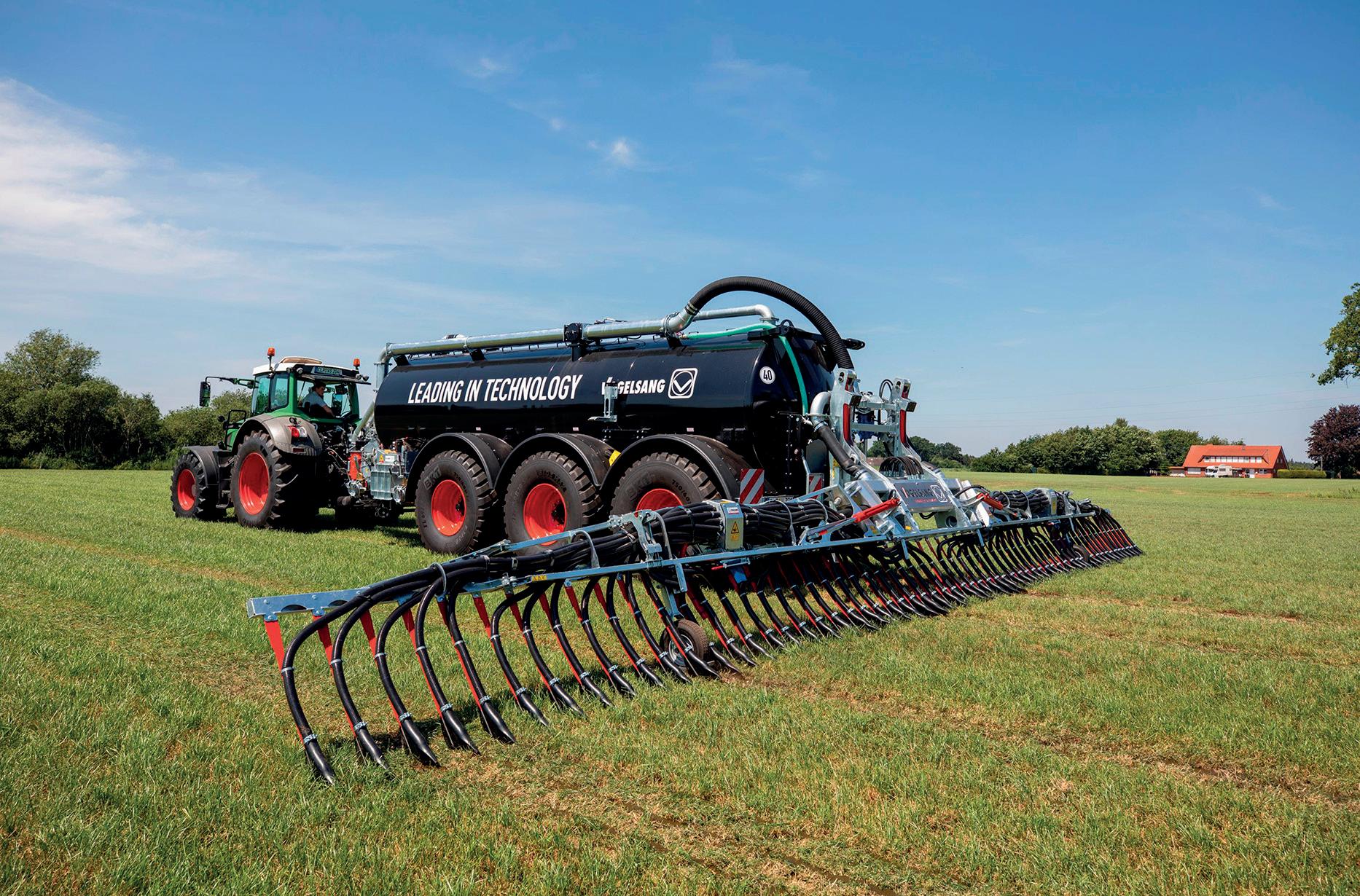
Soil already high in P may have underlying issues, preventing the P being taken up by the plant. This is why Mr Brewer says the balancing act of inputs and soil stock is so important.
He says: “In a recent study, we worked with a farm to establish why P levels were so high in the soil, yet so low in its silage. Through soil tests, we established that the lack of available P was being caused by high carbonate of lime and high pH, which was fixing the P in the soil rather than making it available to the plant.”
Soil science offers significant insight, but more fundamental decisions relating to the physical application of slurry can be equally important.
Mr Hayhurst says umbilical slurry application is growing in popularity and can help reduce soil compaction through the removal of large tankers travelling across the field surface.
He says: “It is great to have the ambition to apply slurry umbilically, but the slurry must be of a suitable homogenous quality. Often, without mixing or separation, slurry can be too thick or contain too high a volume of solids to be pumped efficiently. This can lead to pump failure, issues with macerators and, potentially, blowouts causing spillages.”
Splash plates will be banned in England in 2025 and the FETF is also offering farms significant funding towards more efficient slurry applicators.
Dribble bar applicators with a working width of at least six metres and an expected purchase price of £10,500 will be met with £4,200 of grant funding.
Larger dribble bars with a working width of at least 10m and an estimated cost of £13,500 will qualify for £5,400.
Trailing shoe and injection systems qualify for a more generous 50 per cent grant, with the Government estimating that a 6m injection system will cost £17,968 and the same sized trail-
ing shoe £14,750. There is a further grant for larger trailing shoe systems with working widths of more than 8m.
For speed and accuracy, the trailing shoe is gaining in popularity and, with a more generous grant allocation, it is likely that farms will opt to go down this route over dribble bars.

Mr Hayhurst adds: “A trailing shoe can offer the best balance of application accuracy, speed and cost.
“It separates the crop so slurry can be deposited directly to the soil in a thin strip.
“This keeps the plants clean, prevents slurry from contaminating the crop and enables more nutrients to reach the roots.”









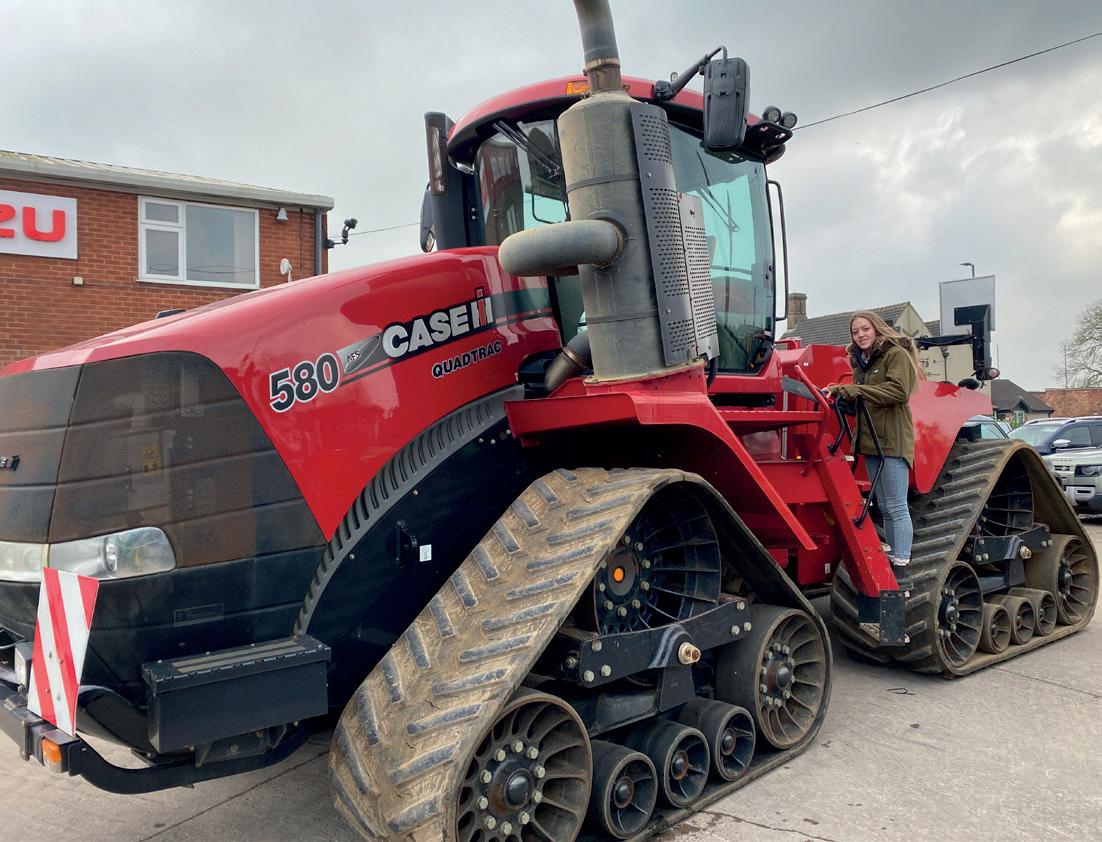



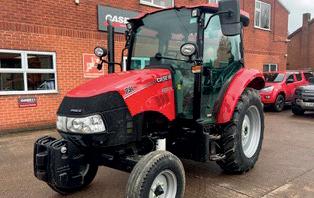
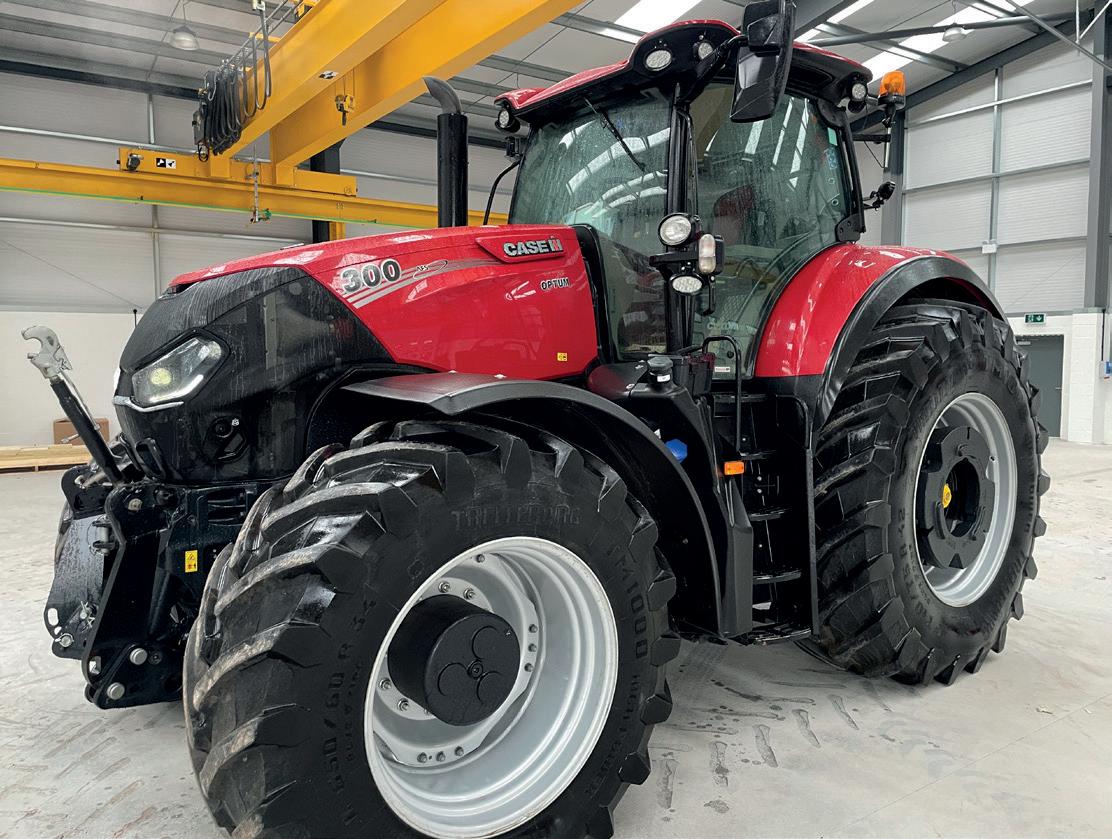


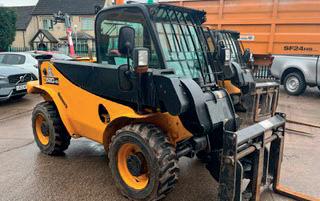





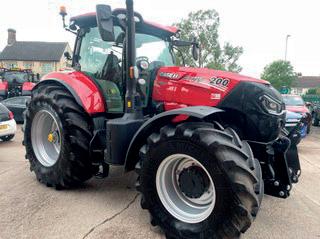
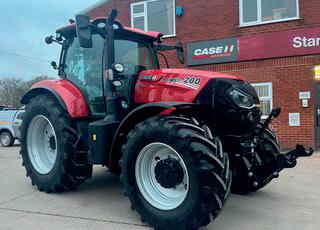
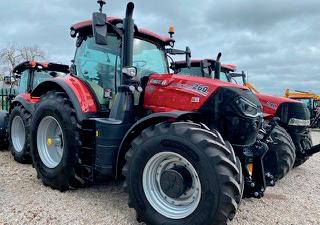




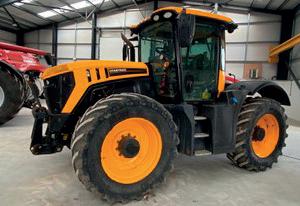
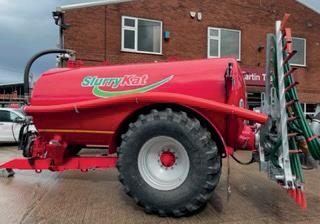
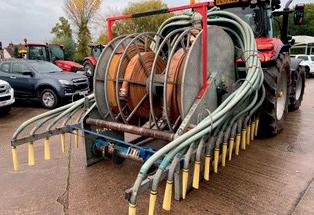
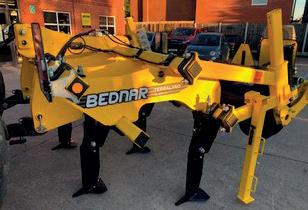


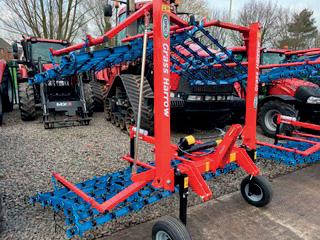


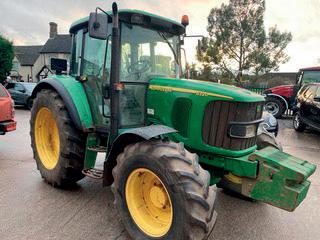
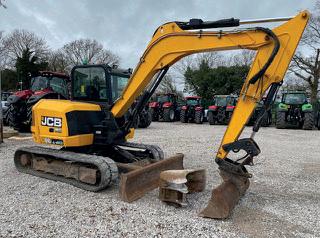








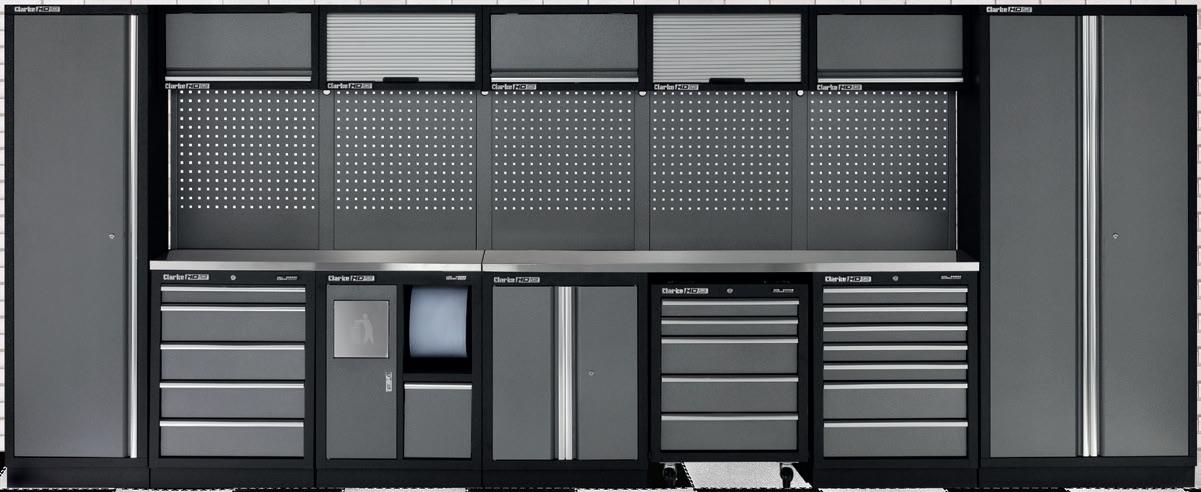





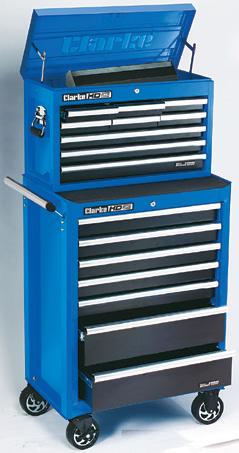

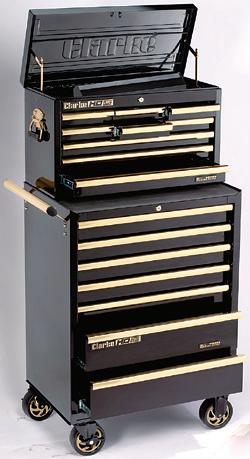



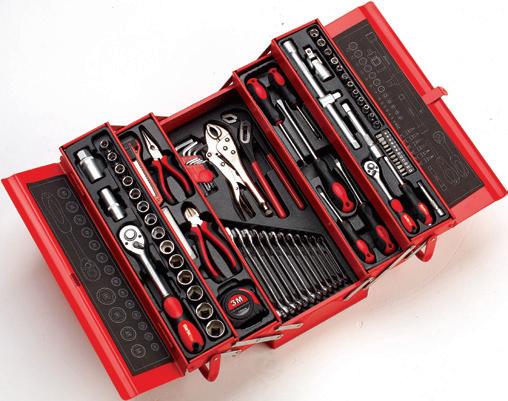
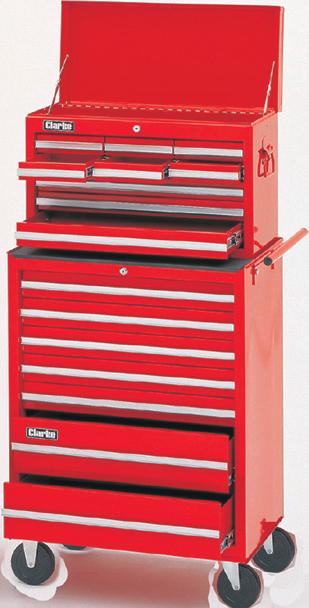
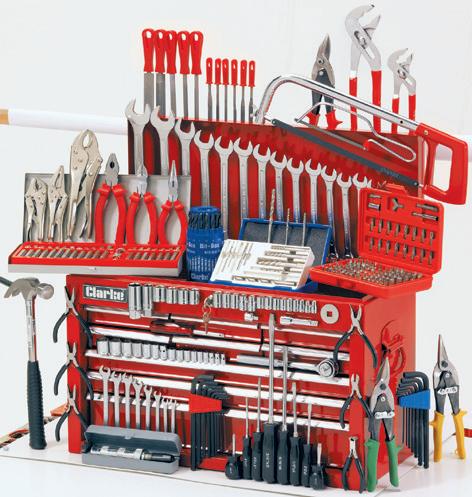
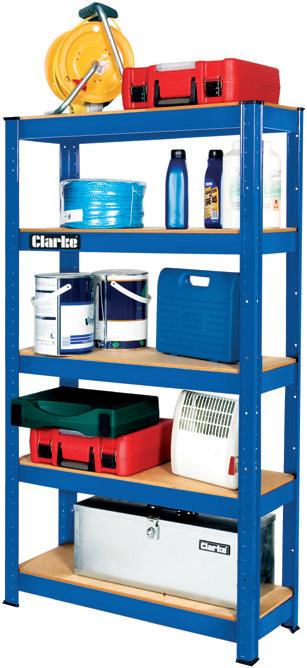







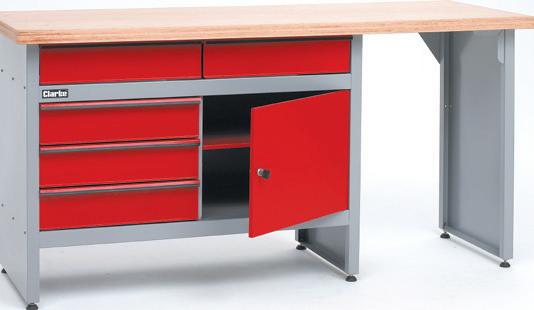
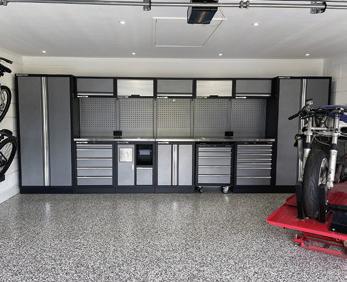



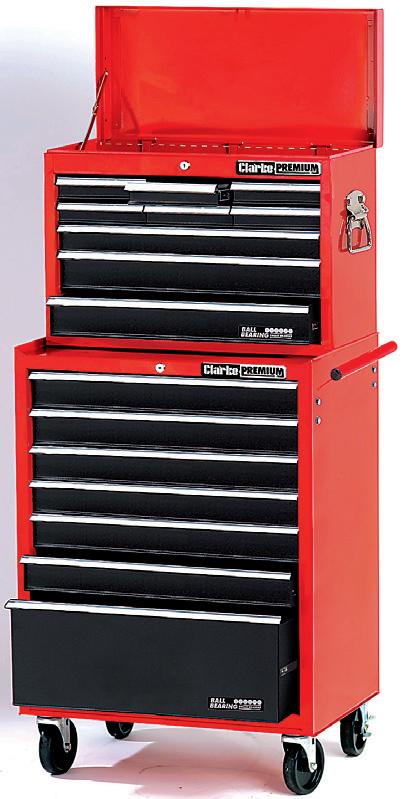






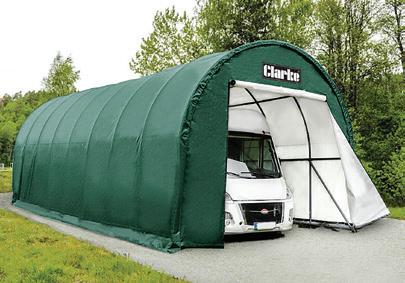
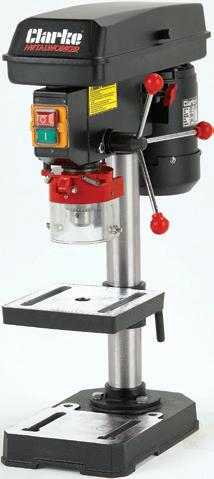



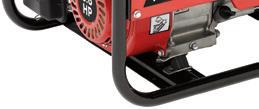














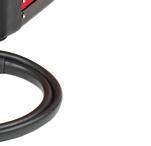

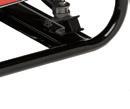
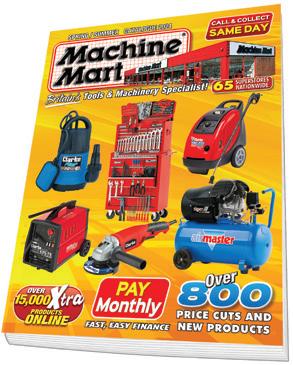




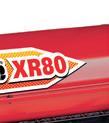

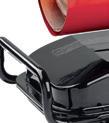












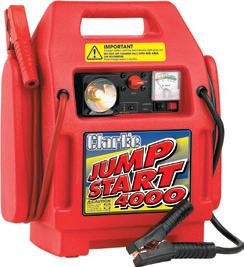







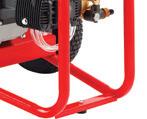














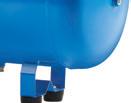


























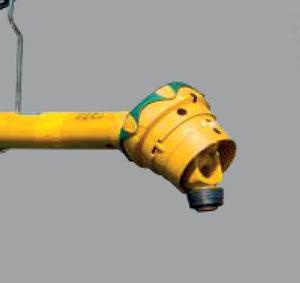





















M21 Cultivator, Steel Disc, LD Coulter
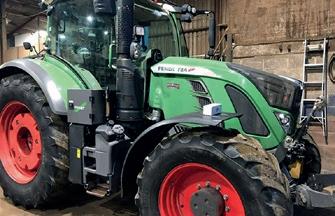
FENDT 724
7413 Hrs, 240 HP
Tyres: 600/65R28 (30%)
650/65R38 (50%)
+VAT

Approx 26800 Hectares, 5000 Litre, 12/24m 5 Piece Boom, Boom Control Pro, Steering / Suspended Axle, CCS Pro (Valve Control System)

FENDT 828
7525 Hrs, 280 HP
Tyres: 600/70R30 (95%)
710/70R42 (100%) £81,750 +VAT

MF 1525M HP
25 HP, Turf Tyres
Tyres: 24 X 850-12 (100%)
315/75D-15 (100%)

VALTRA G125EA
127 Hrs, 115 HP
Tyres: 440/65R28 (100%)
540/65R38 (100%)
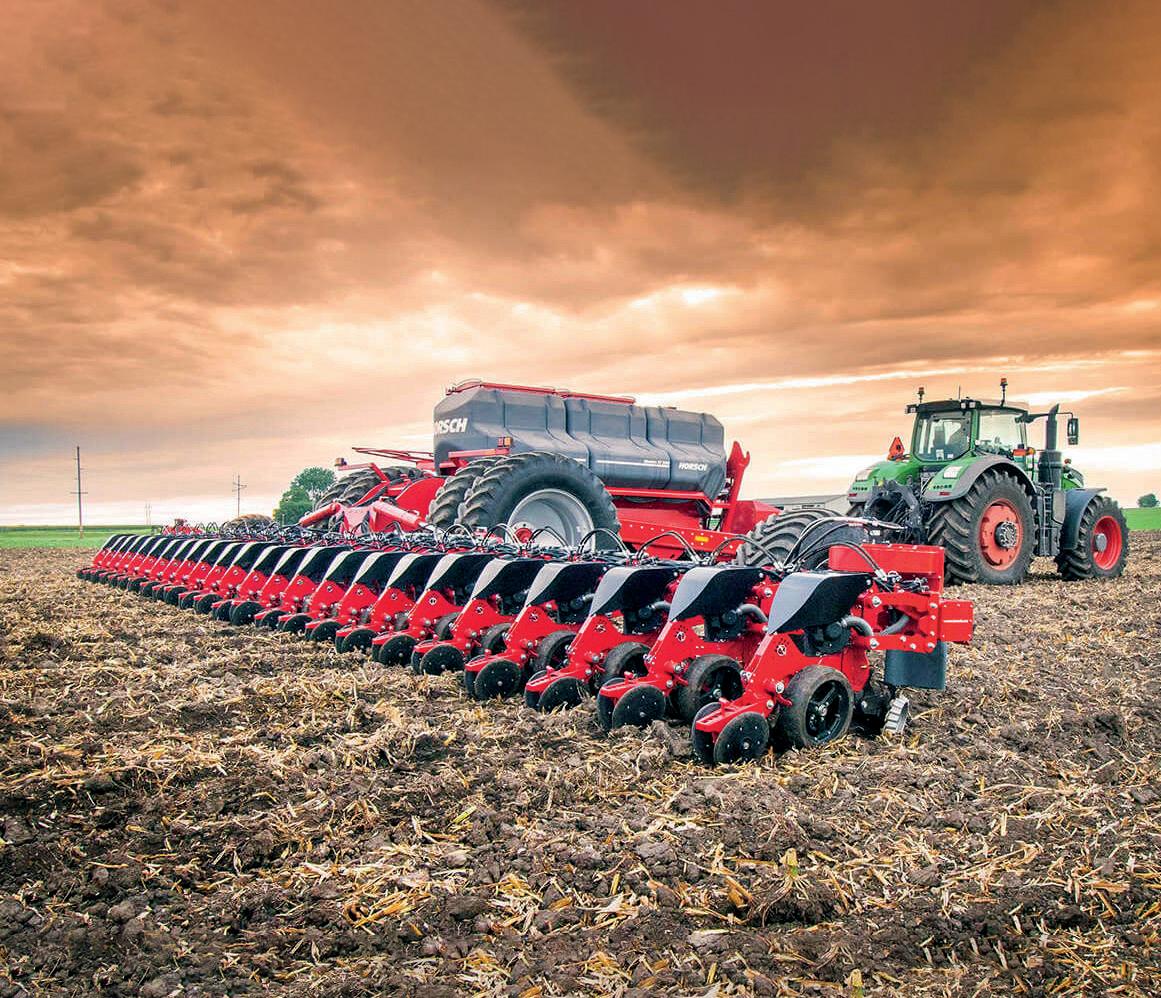
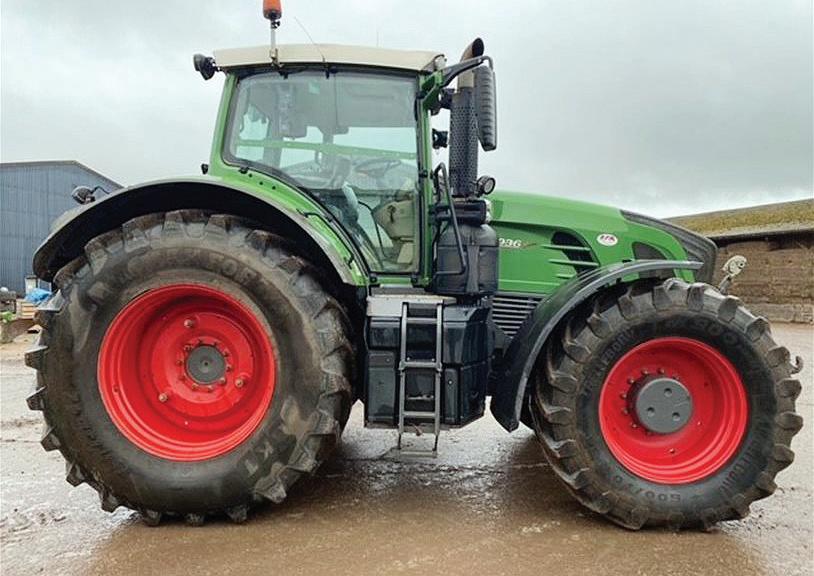
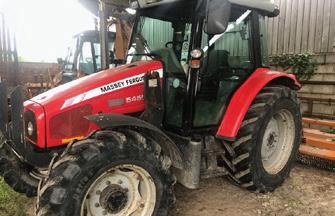
MF 5455
3350 Hrs, 110 HP
Tyres: 340/85R24 (50%) 460/85R34 (50%)
2019

VALTRA T174
1890 Hrs, 175 HP
Tyres: 540/65R28 (75%)
650/65R38 (75%) £59,950 +VAT

FENDT 936
7250 Hrs, 366 HP
Tyres: 600/70R34 (30%)
710/75R42 (30%)
Profi+ Spec, 4 Spools, VARIO Transmission
+VAT

MF 7614 5408 Hrs, ESSENTIAL
Spec, Loader Ready (No Loader Beam) £33,750 +VAT

VALTRA T234D
6473 Hrs, 230 HP
Tyres: 600/65R28 (30%)
650/75R38 (40%) £62,250 +VAT
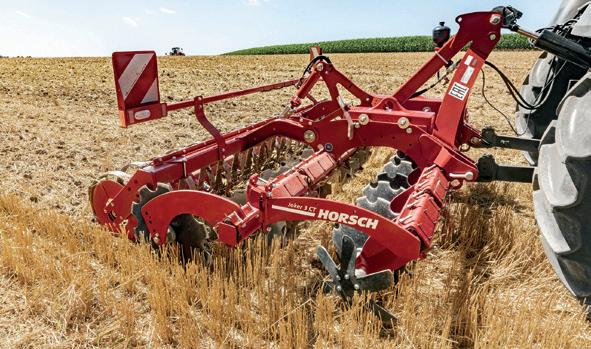
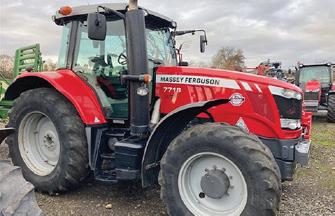
MF 7718 EFD6
4659 Hrs, 175 HP
Tyres: 480/65R28 (70%)
600/65R38 (70%)



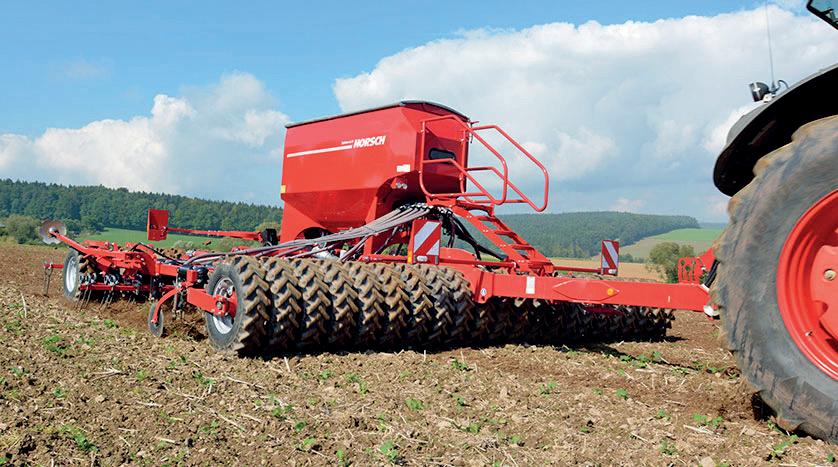




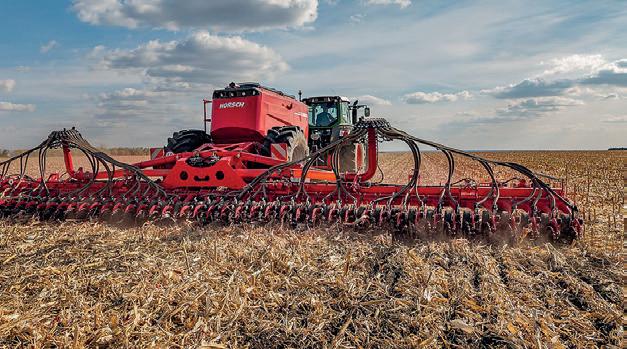



Main Road, Brompton-By-Sawdon, Scarborough, North Yorkshire YO13 9DP
Tel: +44 (0)1723 859785 / 859698
Sales: Eric - 07836 630558
Cameron - 07946 335030
Thomas - 07538 390091
www.hardwickagricultural.co.uk
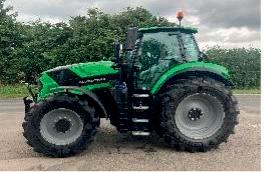
New Deutz Fahr 6230 RC 6-cylinder, 230hp, 50kph, RC shift 54/27, 4 spools, GPS compatible, front links with spool
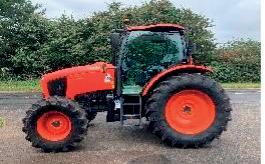



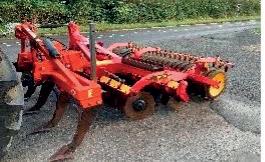
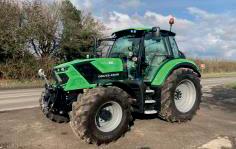
New Deutz Fahr 6150.4C 4-cylinder, 150hp, 50kph, RV shift 20/18, Stop/Go feature, front linkage, 4 spools.

Used Kubota M7-131 4-cylinder, 130hp, 50kph, 36/36 powershift, year 2017, 4,900 hrs

Merlo 35.7 – 140 (EX-Demo) Boom suspension, 40k-2 speed hydrostatic drive, reverse fan, pick up hitch, DAB radio







Used Deutz Fahr m420 4cyl-158hp, 6x4 powershift, 9200kg rear lift, front links and spool, 4 speed PTO, year 2012, 4825 hours
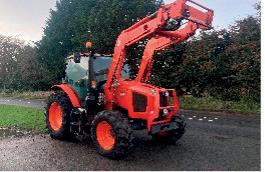
Used Kubota MGX95 4 cyl-104hp, 1950kg loader lift, bi-speed turning, year 2017, 6320 hours
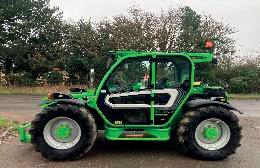
Used Merlo 35.7 – 115 Boom suspension, 40k-2 speed hydrostatic drive, reverse fan, pick up hitch, year 2019, 2800 hours
*Don’t miss out on Kuhn’s 0% Finance on grassland machinery*



Used John Deere 5055E 55hp, 2 spools, 40kph powershift, year 2016, 340 hours, Immaculate condition
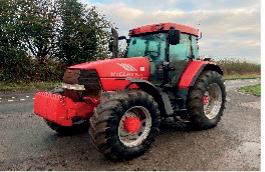
Used McCormick MTX140 6-cylinder, 140hp,32 speed + creep, Year 2002, 4300 hours


Used New Holland T6030 6-cylinder, 115hp, 40kph, 24/24 powershift, year 2010, 5435hrs
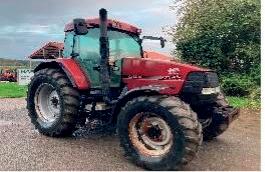
Used Case MX135 6-cylinder, 135hp, 40kph year 2001, 8320 hours




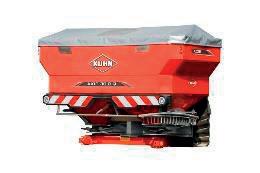
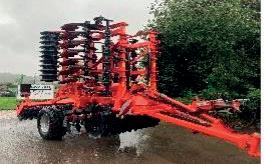


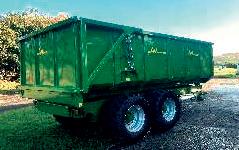




RICHARD WESTERN SF 18
HS GRAIN TRAILER
Sprung draw bar. Hyd door . Sprung commercial axles. Air/hyd brakes. 650 wheels. Ym 2019. Grain chute. High level lights. Mudguards. Proper trailer!!!!!
Price: £19750

BAILEY TB 9. GRAIN TRAILER.
Hyd door.
435 low profile wheels on 8 stud axles. Ym 2022.
Very good order!!
Price: £11000


TOYOTA HILUX SINGLE CAB Ym 2014. Only done 52640 miles. Load liner. Tow bar. 1 owner from new.
Price: £14950
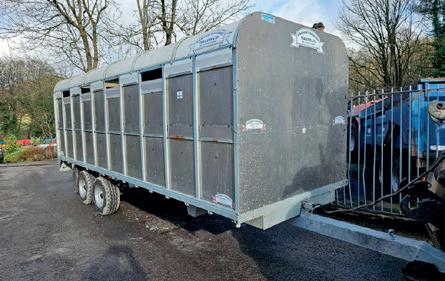
GRAHAM EDWARDS 20’ TRACTOR TOW CATTLE TRAILER.
1 farmer from new.
Price: £9000

BUNNING
mk4
Weigh cells. Ym 2015 on 650/65R 38 Alliance wheels. Wide angle pto. Good order.
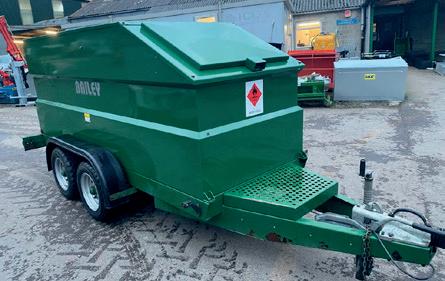
BAILEY FUEL BOWSER 2000L TANK
C/w 12v pump. 220l tank for add blue. Ym 2015. Tidy order.
Price: £6000

MARSHALL 32’ BALE TRAILER.
On 10 stud rocking beam axles. 560/45 R22.5 wheels. Air /hyd brakes. Sprung draw bar. Ym 2013. Tidy order. Choice of 2.
Price: £8650


KTWO 16T ROADEO CURVE
GRAIN TRAILER Sprung draw bar. Hyd door. Grain chute. On Sprung commercial axles. Air/hyd brakes. 560/60 22.5 wheels. Ym 2021. Very little work done.
Price: £17950

MARSHALL 21’ BALE TRAILER on 12.5 wheels. rocking beam axles. Ym 2015. C/w. Marshall 21’ aluminium live stockcontainer. (No decks) 1 cattle partition. Ym 2015. Very useful out fit!!!
Price: £11500

Ym 2009.
Price: £26000

On 750 alliance wheels. Sprung draw bar. Ym 2015. Very good order!!
Price: £11200
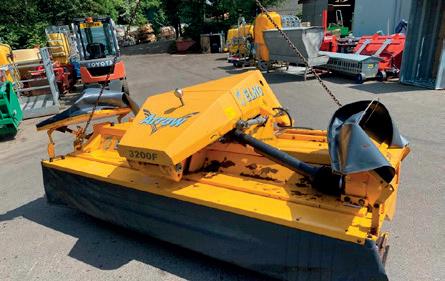
Pull type.
Tidy order.
Price: £5000
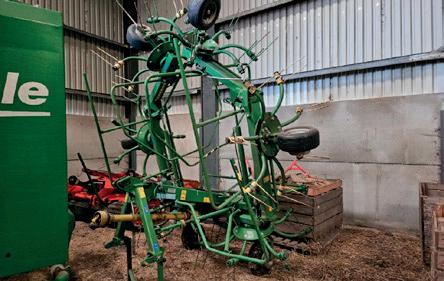
Price: POA

TANK. sprung draw bar. Mec 8000l pump. On 23.1 wheels. Ym 2013.
Price: £8500
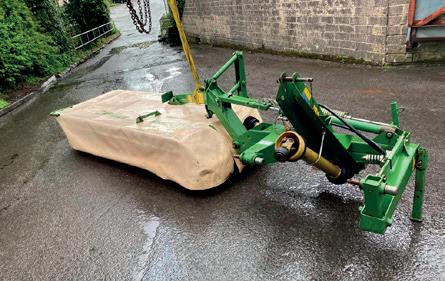
Price: £4950

Price: £7750
Price: POA
Price: £12500
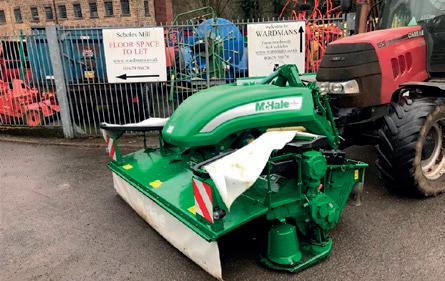
Ym 2020. Tidy machine!!
Price: £8500

controls. Ym 2019 Tidy order.
Price: £19500

£3300
Price: POA

442 PLAIN MOWER. 4.42 cutting width. Ym 2015.
Price: £7000

Hyd in/out ym 2019. Very good order. Price: £14500
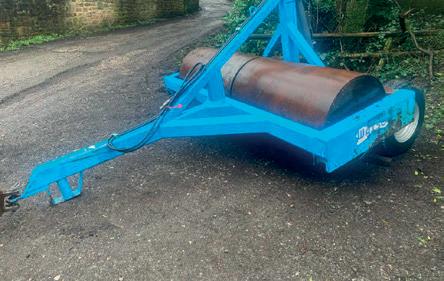
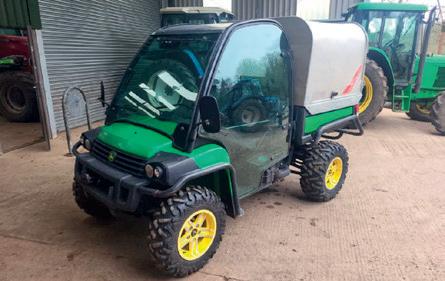
JOHN DEERE GATOR
ym 2016. Road registered.
C/W canopy. 3320hrs tidy order.
Price: £11750
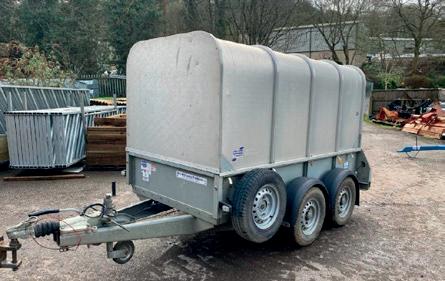
IFOR WILLIAMS TRAILER.
C/w livestock top. Braked axles. Ym 2015.
Very little work done.
Price: £2600
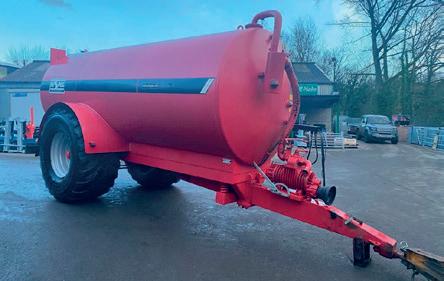
draw bar.
On 750 Trelleborg tyres. Ym 2015. 2 fill points. 1 farmer from new. nice tank.
Price: £14000

CV
Swivel head stock. Very good order!!!!
Price: POA
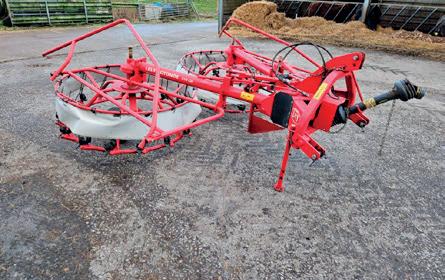
good order!!
Price: £6250

£3250
£4800


USED DIECI 30.7 AGRIFARMER 2020 MODEL, 960 HOURS £POA
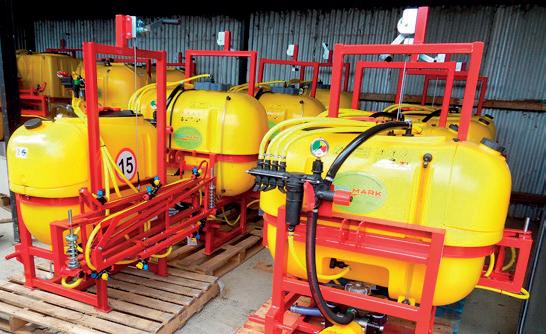




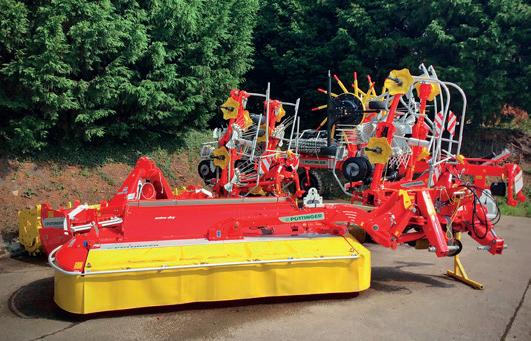






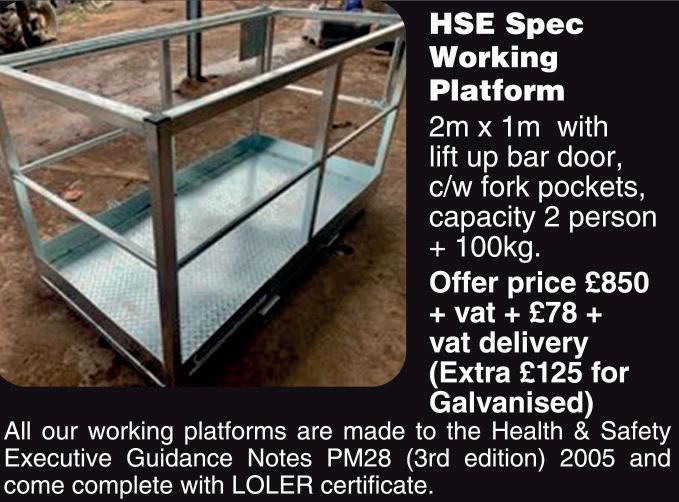

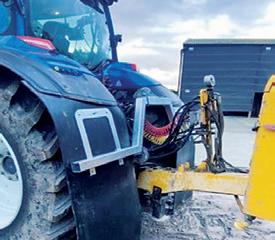










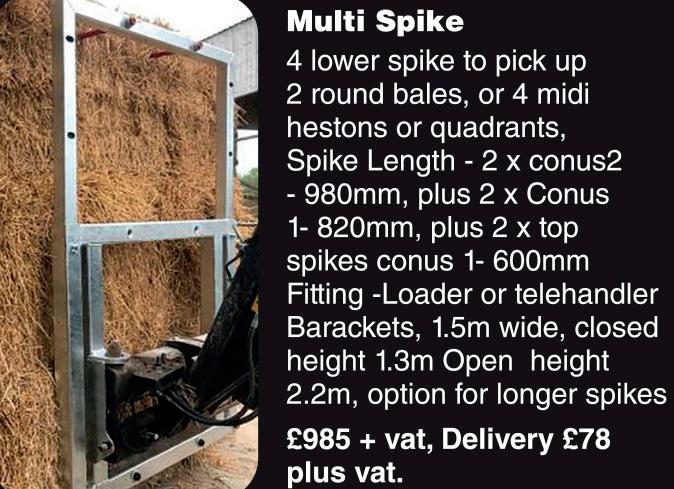

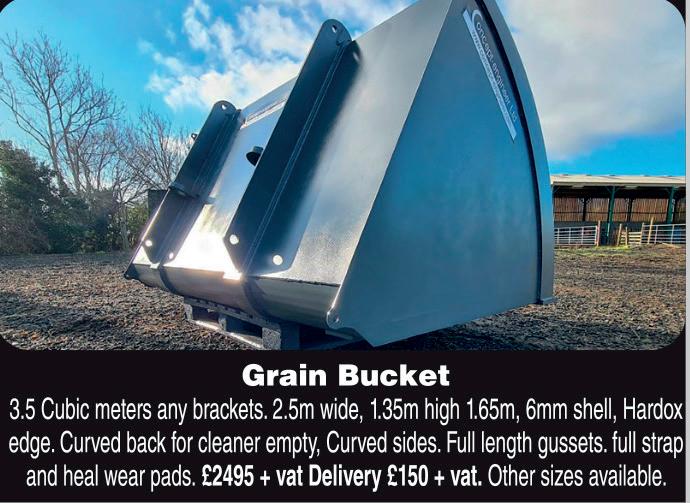




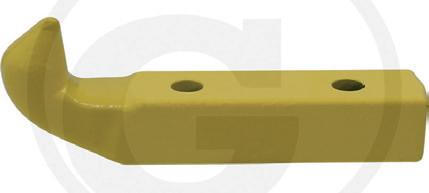
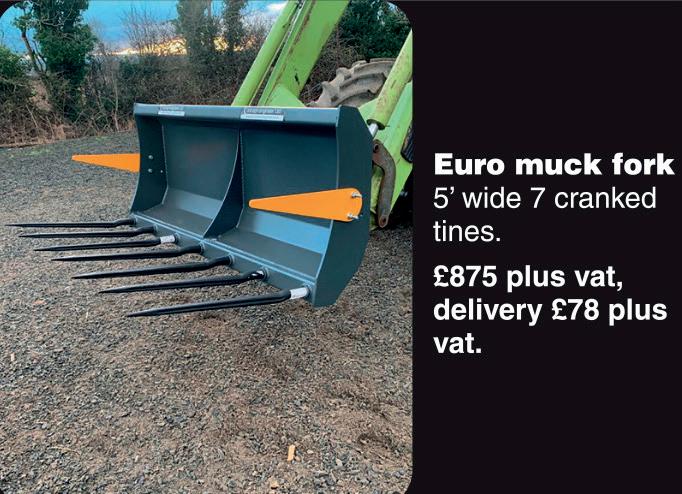




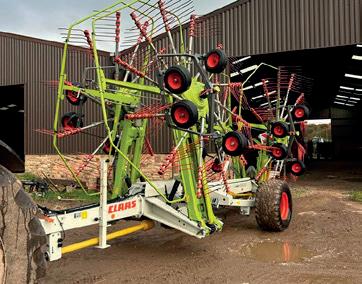
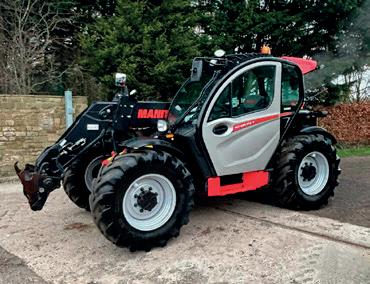
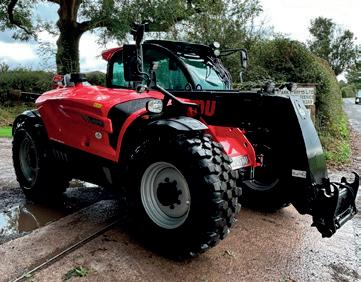
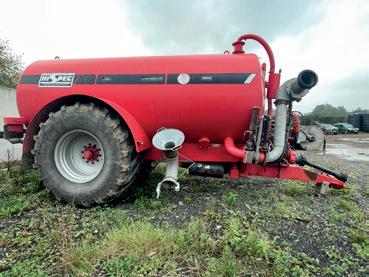
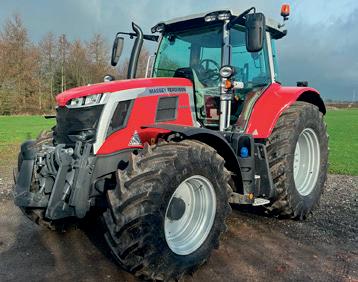

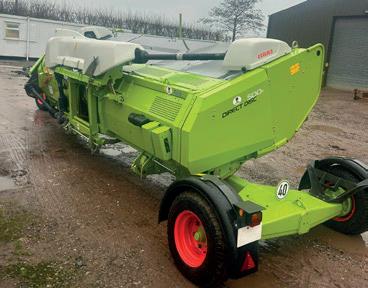












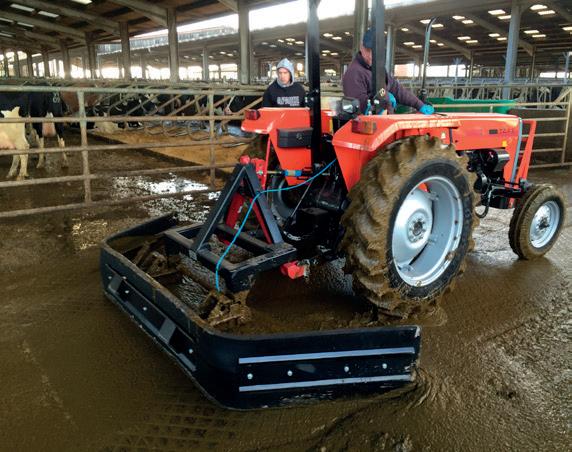






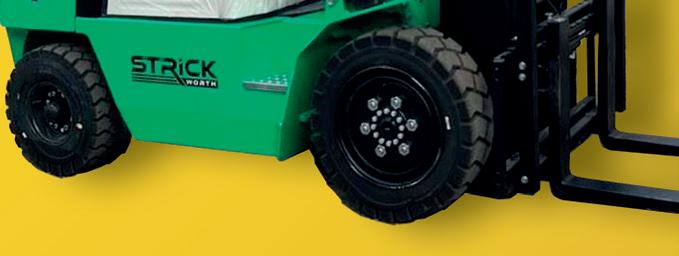









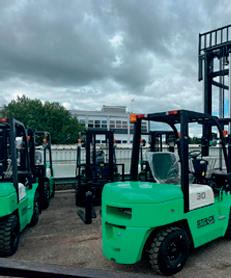




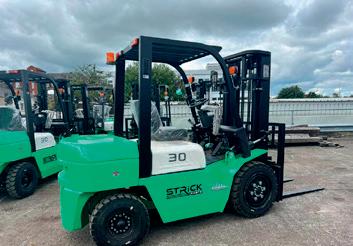
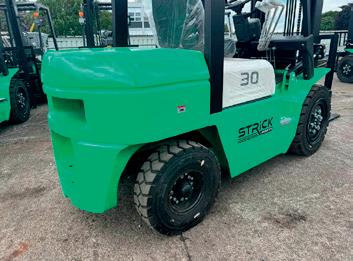


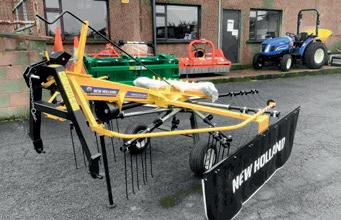

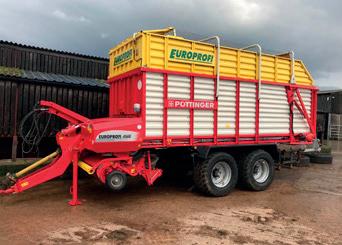



kptractors1@outlook.com
• 17 Reg MF 7726 4 x 4 FL Dyna 6 just Finished 5 Year Maintenance contract 6150 Hrs
• 16 Reg MF 7720s 4 x 4 Dyna VT DL FS CS 50K Air Brakes 5200 Hrs
• 20 Reg MF 7720s 4 x 4 1600 Hrs FS CS 50K Air Brakes Warranty to 3000Hrs
• 62 Reg MF 7624 4 x 4 Dyna 6 50K FL 5200 Hrs
• 20 Reg MF 7718s 4 x 4 Dyna 6 50K 1600 Hrs Air brakes 2 years left on warranty
• 13 Reg MF 7618 4 x 4 Dyna 6 7500 Hrs 50K Air Brakes
• 08 Reg MF 6499 4 x 4 Dyna 6 FS CS 50K 7700 Hrs
• 11 Reg MF 6495 4 x 4 FS CS FL 6900 Hrs Dyna6
• 06 Reg MF 6495 4 x 4 FS CS Dyna 6 7800 Hrs
• 06 Reg MF 6480 4 x 4 CS 5800 Hrs
• 08 Reg MF 6475 4 x 4 Dyna 6
• Y Reg MF 6280 4 x 4 FL
• 18 Reg MF 5710s 4 x 4 Ess Spec wth MF loader 3870 Hrs
• 67 reg JCB 536-60 Agri super Teleporter 3400 Hrs
• 19 Reg JCB 532/70 agri super 4600 Hrs 125 HP New tyres
• 04 Reg JCB 540/70 Agri Super 4500 Hrs
• 03 Reg JCB 530/70 4 x 4
• 06 Reg JCB 526s 4 x 4 5000 Hrs
• Q Reg David Brown Superamatic 880
• 1964 Fordson Super Dexta
• J Reg MF 135
• R Reg Ford 6600 with loader
• 2010 Kilworth Topper 6 ft wide
Fountain House, 111 Scawby



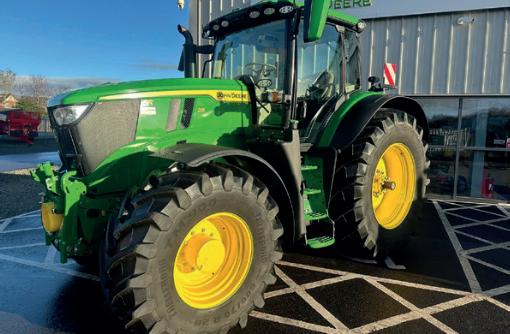









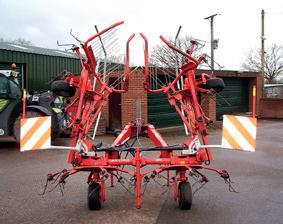





















2012 Lely 600 tedder, 4 rotor hydraulic folding, c/w gates, £5450
Dowdeswell 6` heavy duty rotor spike, tidy, £895
2014 Connor 1000 rotor spreader, 550 tyres, as new, £5750
Marshall/Redrock/Ken Wootton bale trailers, due in, £POA
2010 AJP 5.5 cube rotor spreader, wide tyres, as new, £4750
2002 West 1300 gal. dual spreader, good order, £4250
2008 West 2000 gal. dual spreader, wide tyres, £5400
2015 Abbey 1500 twin auger tub mixer, c/w cross conveyer, £2150
Claas 250 round baler, wide pickup, net/wrap, choice of two, £POA
2016 Claas Volto 800 tedder, tidy order, due in, £6995
2017 AG 125 sawdust cubicle spreader, excellent, £1995
Parmiter Contractor post knocker, full spec, £2500
Kinghitter post knocker, 3 point mounted, tidy order, £1450
McHale 991LBER mounted remote wrapper, very tidy, £3995
2019 Kuhn GF502 tedder, 4 rotor hydraulic folding,
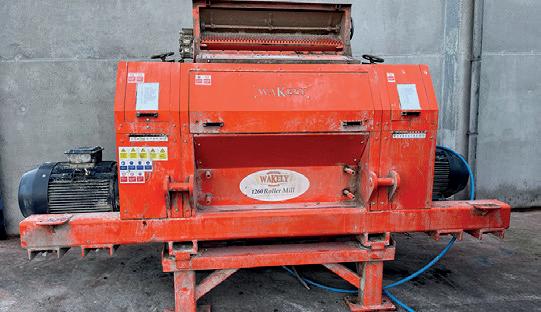











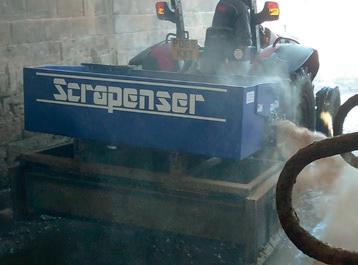
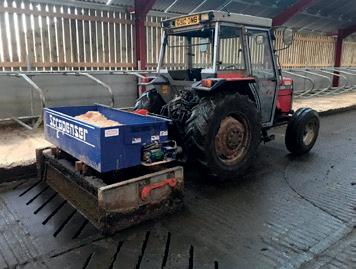



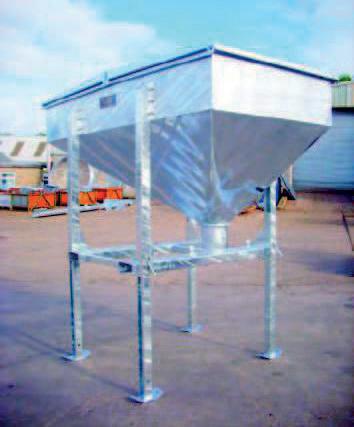






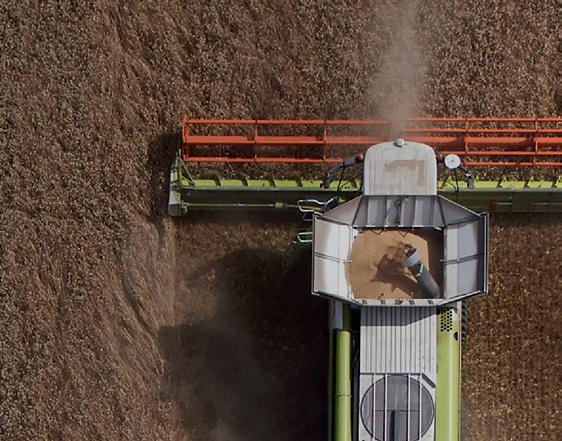

















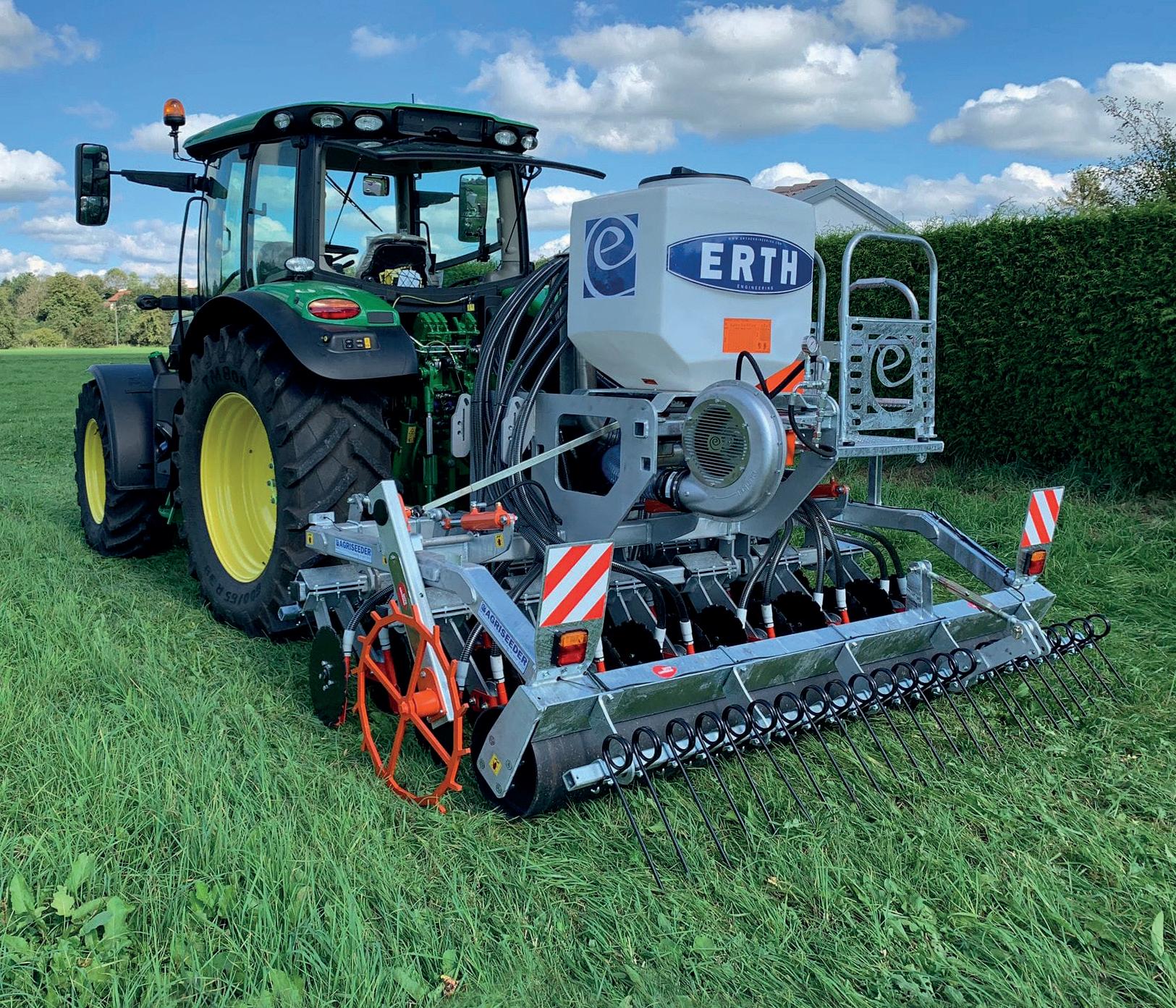
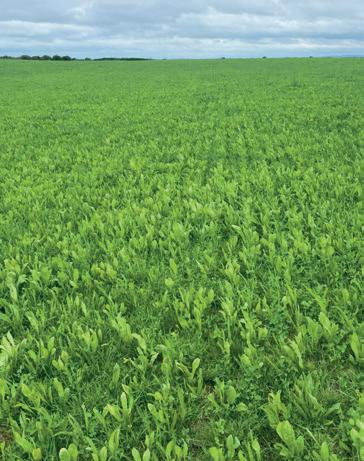












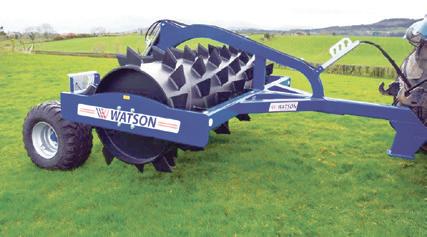

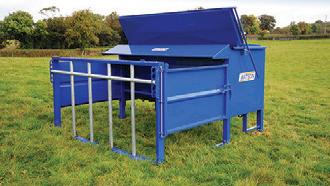




















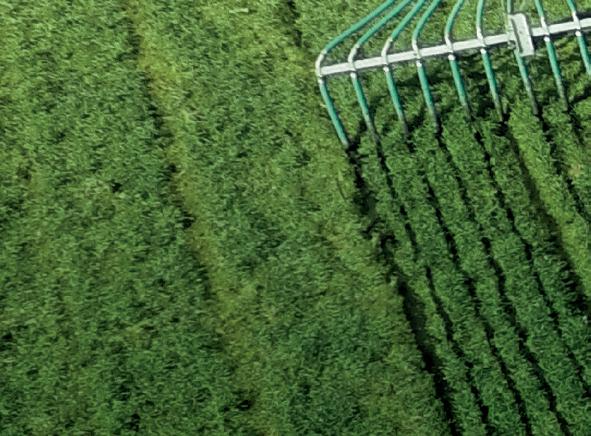

















Flexible, reliable and easy to maintain:
As a pioneer in agricultural technology, Vogelsang leads the way in environmental friendly spreading equipment. The dribble bar systems combined with the ExaCut distributor give the highest application of liquid manure nutrients.
Dribble bars are available in working widths of 7.5m right up to 36m and are retrofit-friendly.
For more information visit www.vogelsang.info/en-uk/dribble-bar-systems
VOGELSANG – LEADING IN TECHNOLOGY
Contact us at: 01270 216 600 | sales.uk@vogelsang.info vogelsang.co.uk




The


The


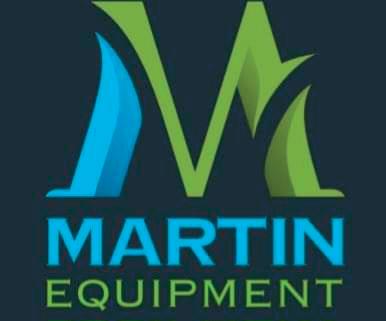














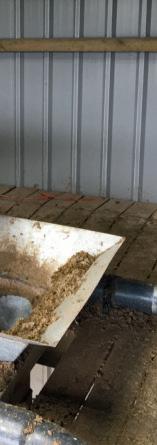













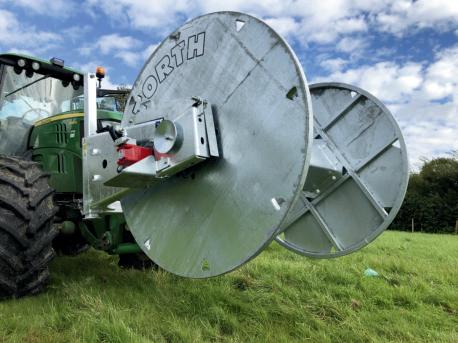


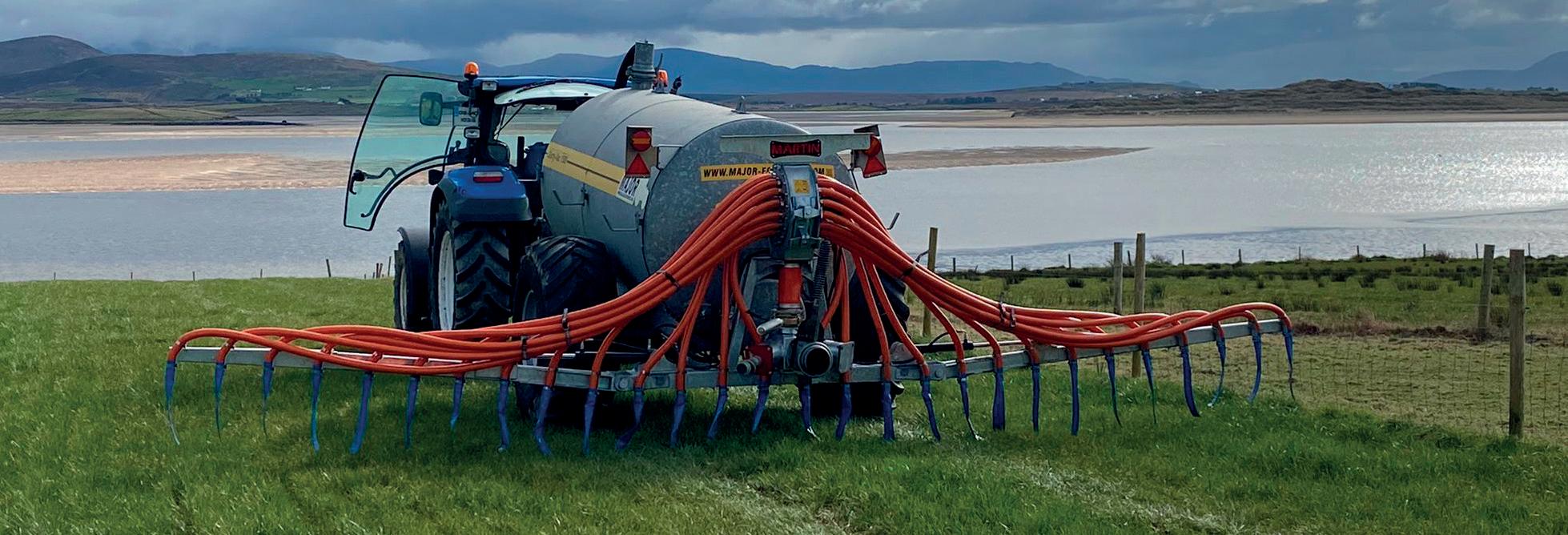









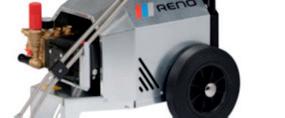


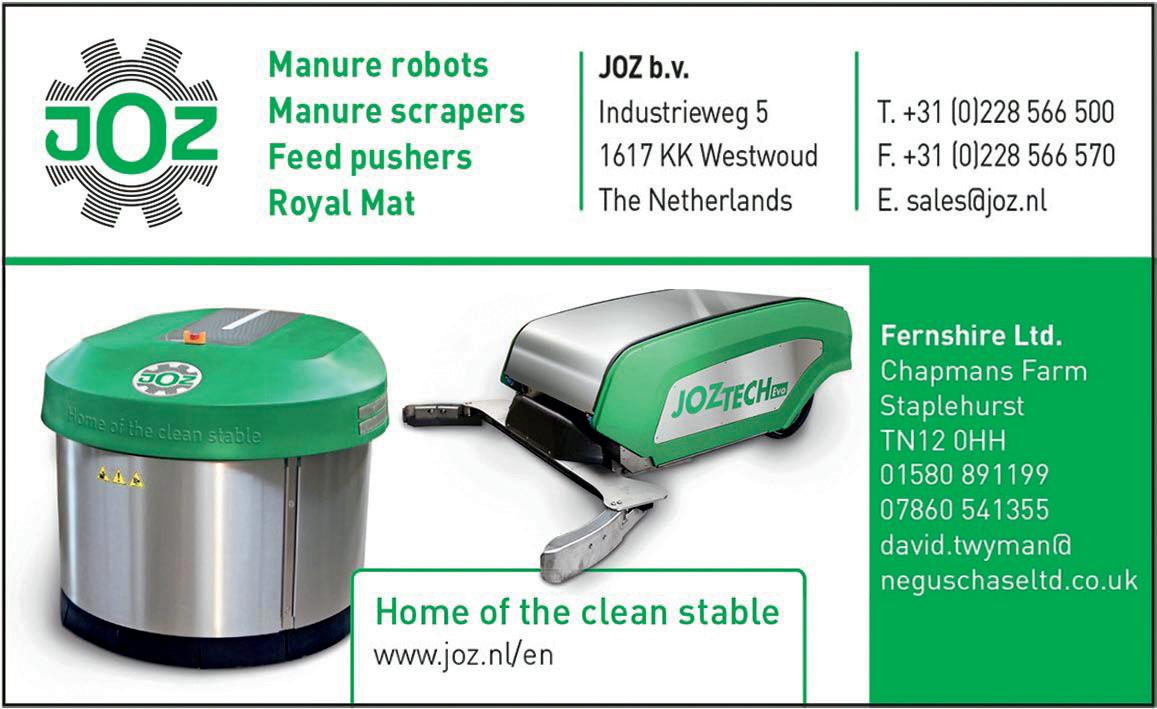




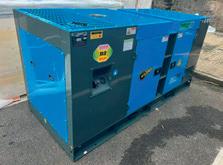


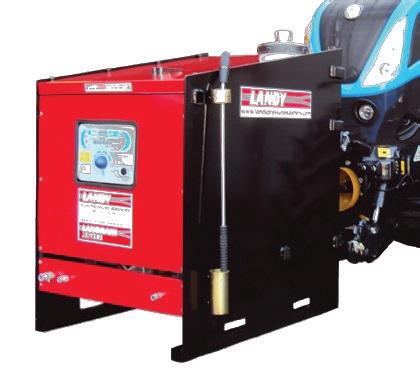






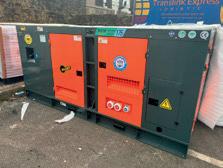






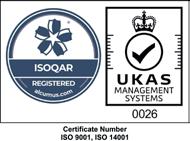




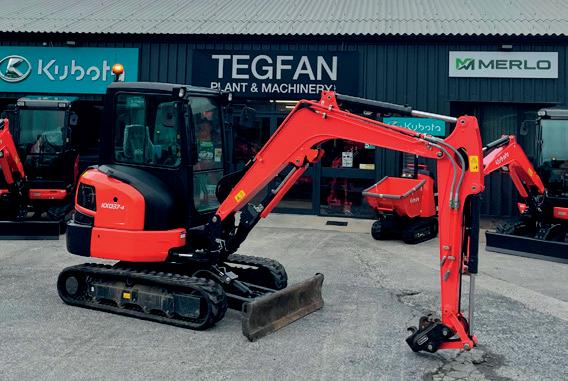



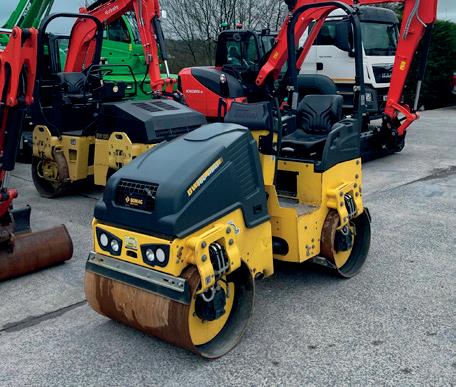








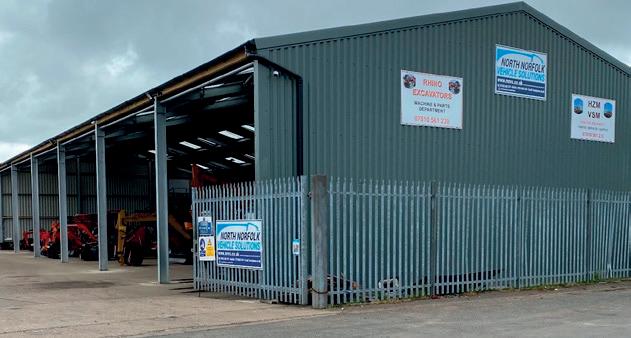

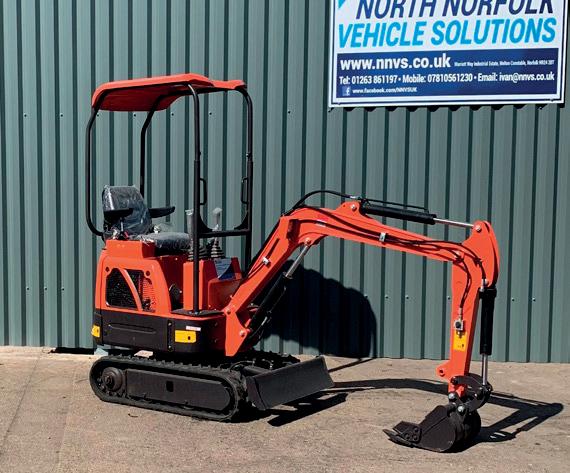

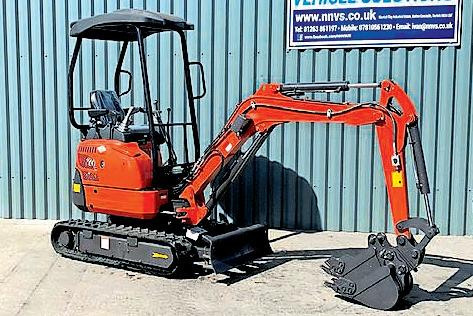
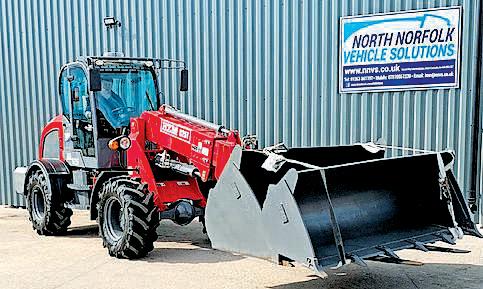
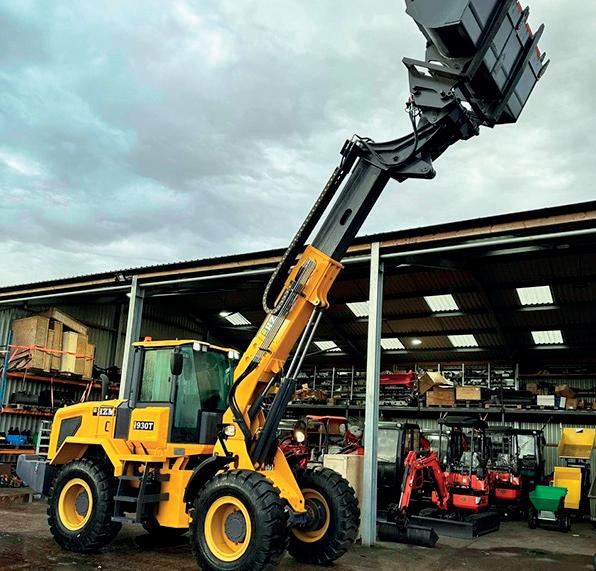
£15,995+vat Kubota £14,995+vat


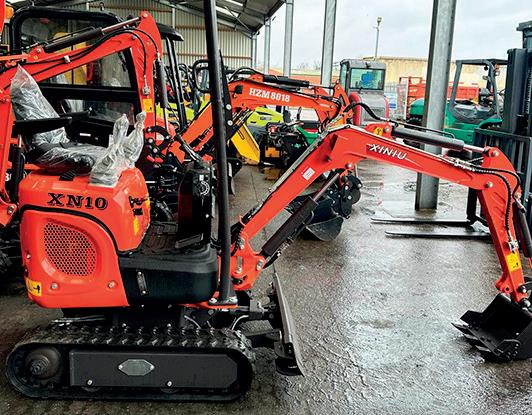

2 Ton Electric £9950+vat
3 Ton Diesel £13995+vat
3 Ton Euro 6 Diesel £15995+vat
4 Ton Diesel £16995+vat
3 Ton Rough Terrain £19450+vat
7 Ton Diesel £29950+vat

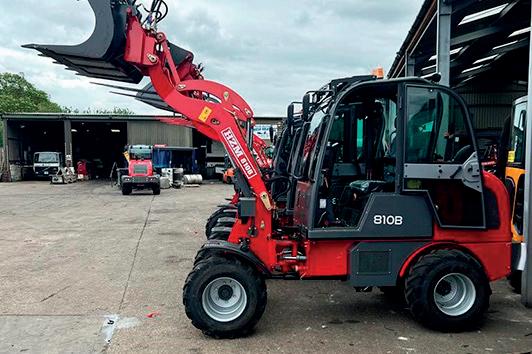
The versatile and efficient solution for all your loading and material handling needs. With a one-ton lift capacity and twin auxiliary hydraulic lines, this little machine can handle


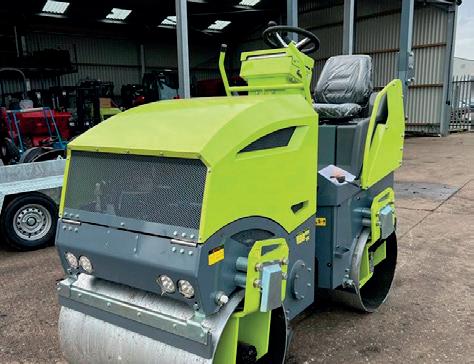

Powerful
Weight: 150kg
Max





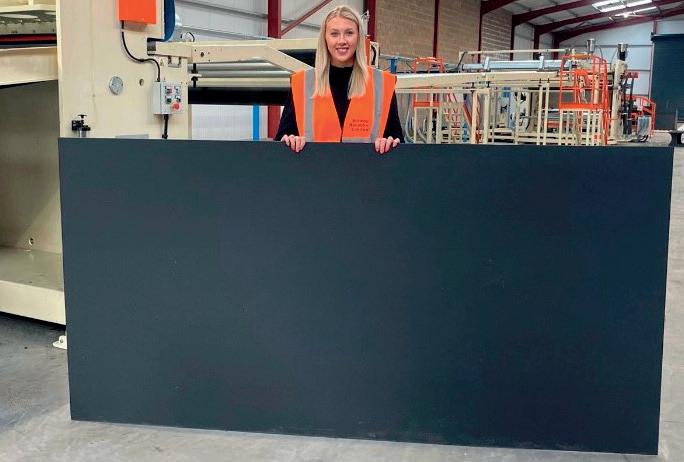
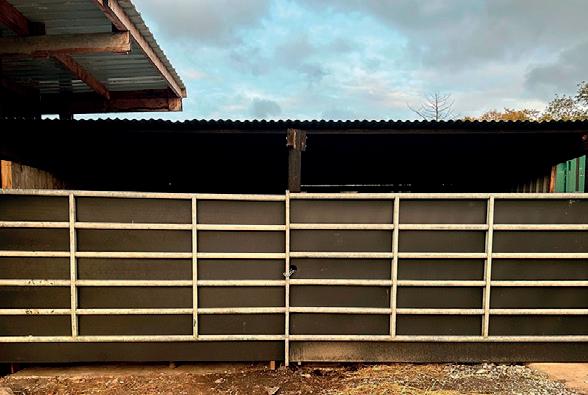
















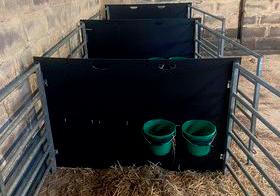






















































MAJOR AUCTION SALE OF 12 AGRICULTURAL TRACTORS, 4 COMBINE HARVESTERS, FORAGE HARVESTER, TELESCOPIC LOADER, LOADING SHOVEL, SELF-PROPELLED SPRAYER, GRASSLAND AND ARABLE MACHINERY AND EQUIPMENT



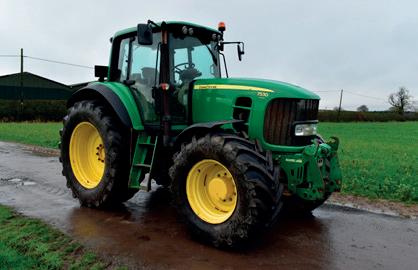

Tractors: John Deere; 3no. 6215R (2020, 2019, 2017), 6210R (2013), 6190R (2014), 2no. 7530 (2010), 6930 (2010), 2650, 2140, Massey Ferguson; 8S225 (2022), 7720S (2019) Combine Harvesters: John Deere; C670 Hillmaster (2009), C670i Hillmaster (2009 & 2007), 9780i CTS Hillmaster (2007) Sprayer: John Deere R4040 36m Self-propelled (2018). Forage Harvester: John Deere 8400i (2017), 2017 Zurn ProfiCut 530 wholecrop header, 2017 John Deere 360 Plus maize header, Loaders/Handlers: JCB 419S shovel (2019), JCB TM310 telescopic loader, JCB 3CX (2004) Trailers: 14no. Bailey grain/silage Trailers etc. Grassland: Claas; Liner 3000, Liner 680, Liner 3100 rakes, Volto 770 tedder (2), Kuhn VKM305 mower, John Deere; 990N, 459 balers, F310R, R950R triple mowers (2), 131 mowers, 2010 McHale 991 bale wrapper, 2012 Kuhn SW4004 bale wrapper, Massey Ferguson; 2170, 185 balers, McConnel PA65T hedgecutter (2), Arable: 2017 John Deere 750A drill, Vaderstad Rexius Twin450, Vaderstad Carrier 6.5m, 2016 KRM M2WD fertiliser spreader, Kverneland Optima HD 8row maize drill (2), 2008 John Deere 840i 36m sprayer, 2020 Weaving Sabre 6000m tine drill, Kuhn HR3004D power harrow/drill combination (2), Sumo Trio sub-soiler (3), Kverneland L585 5furrow plough, 6no. Joskin & Bunning muck spreaders, fuel bowsers, power harrows, cultivators, trailers, wheels & tyres, front weights, buckets & attachments, guidance systems, spares and workshop equipment
WEDNESDAY 3RD APRIL 2024 AT 9.30AM
The Saleground, Sutton, Ely, Cambs, CB6 2QT





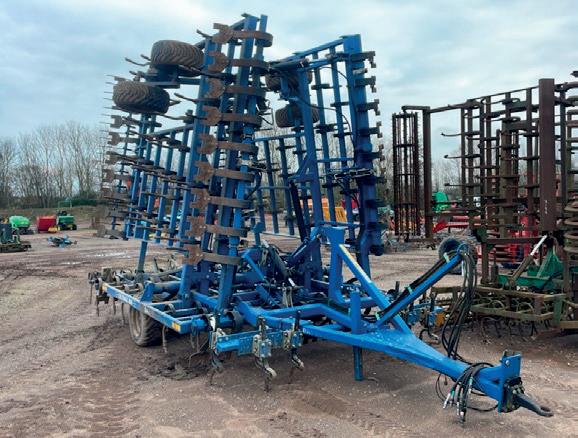
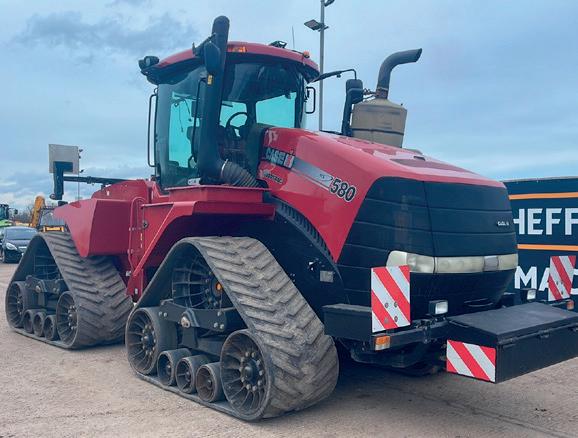
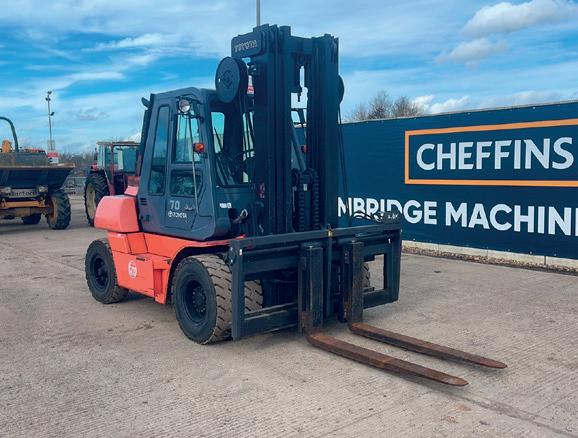
FURTHER ENTRIES INVITED - Anticipated entry of over 300 tractors and 1,500 lots of agricultural and construction, implements and machinery
TRACTORS, PLANT AND MACHINERY LIVE AUCTIONS: MONDAY 8TH APRIL 2024 FROM 9.00AM TIMED ONLINE AUCTIONS: FRIDAY 5TH APRIL 2024 - TUESDAY 9TH APRIL 2024





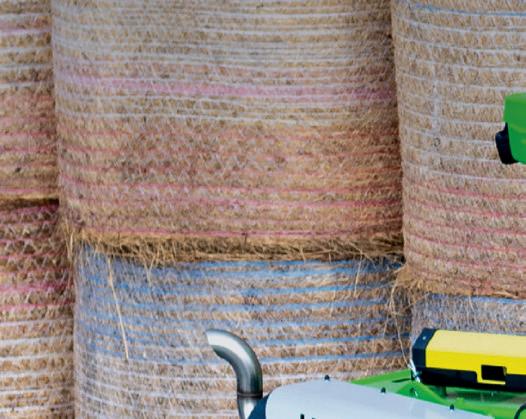
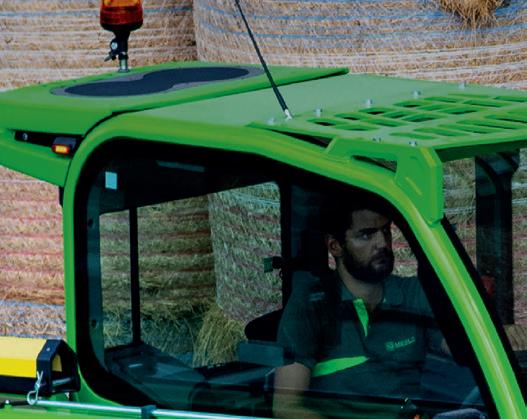

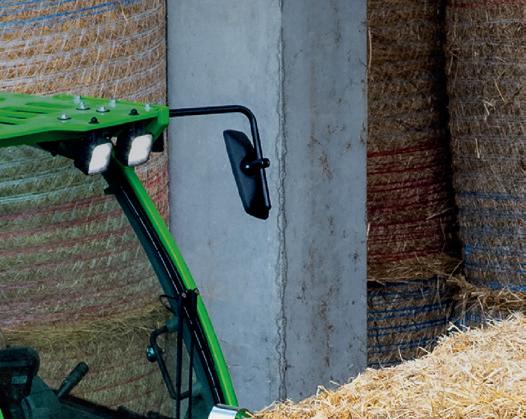
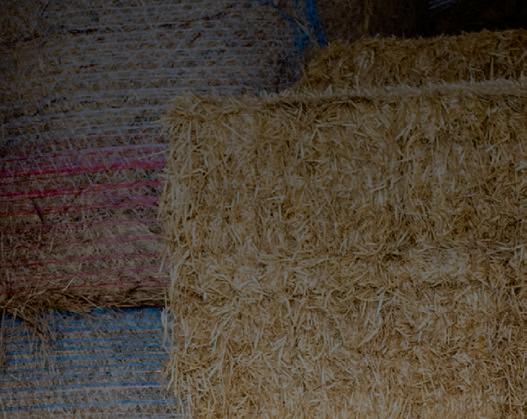

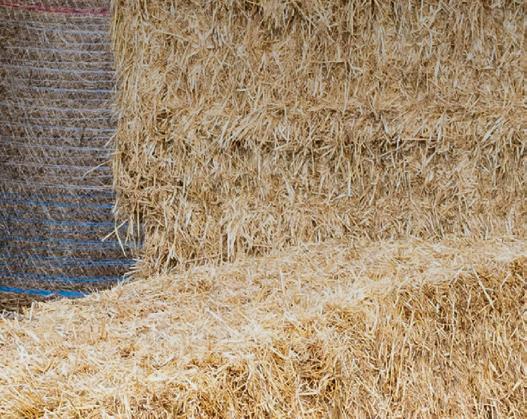










The new Turbofarmer 30.7 adds to our compact agricultural range on offer. Specifically designed to meet the demands of those working in confined spaces such as a traditional farmyard setting, the TF30.7 is the much-anticipated successor to the ever-popular P32.6 model that found favour for many years amongst the British livestock farming sector. Visit merlo.co.uk today to find out more.

merlo.co.uk
